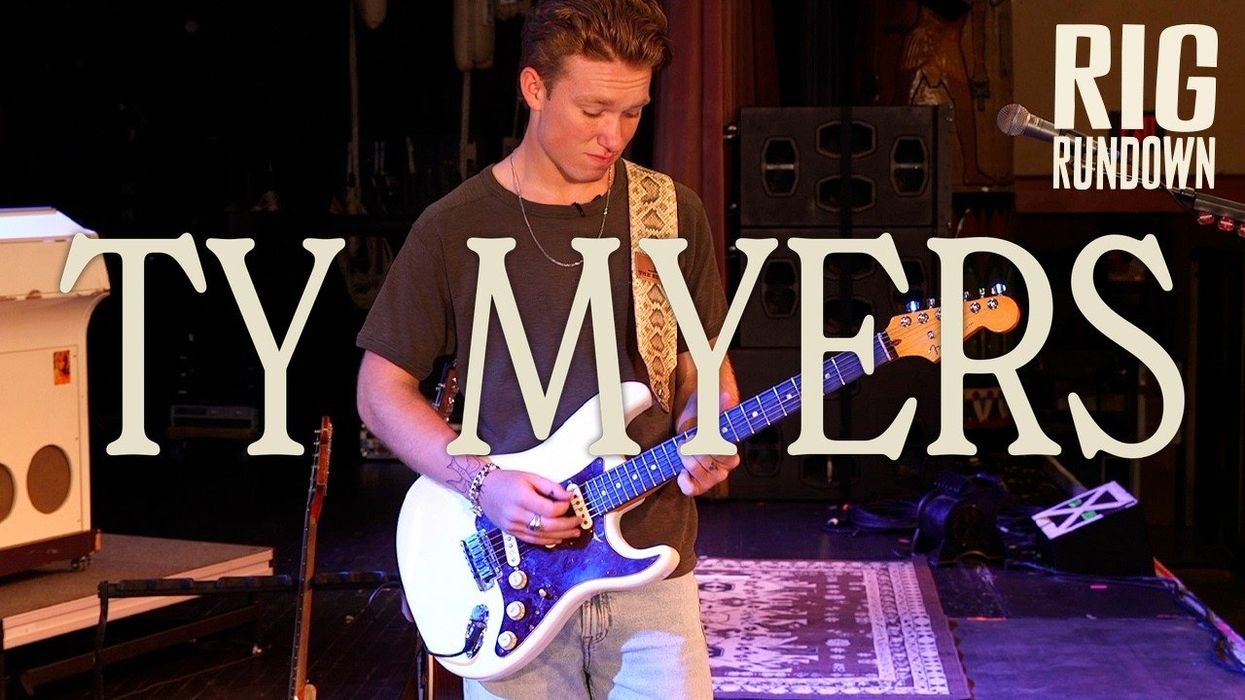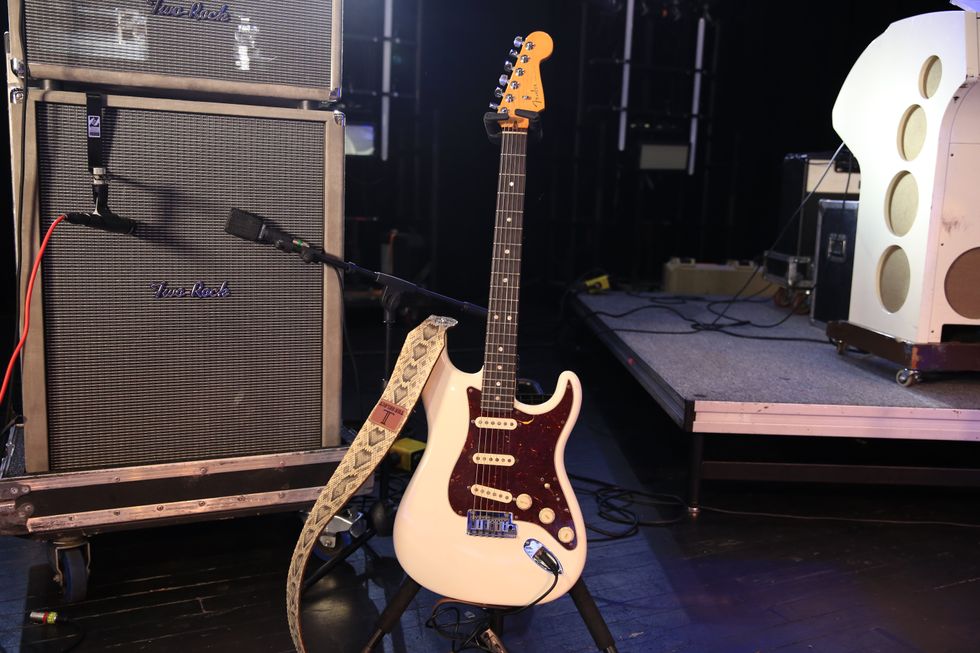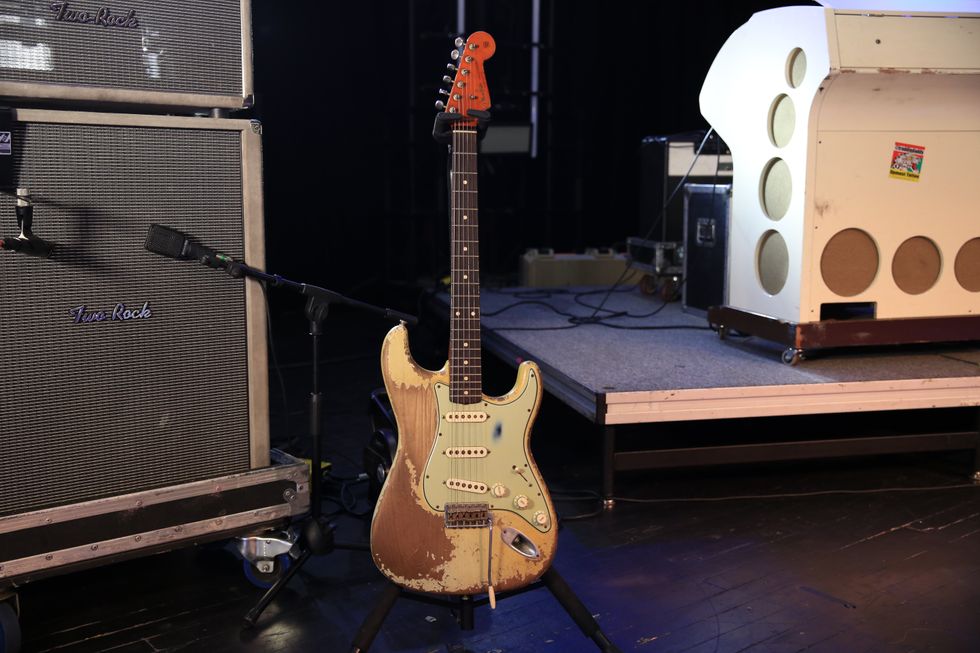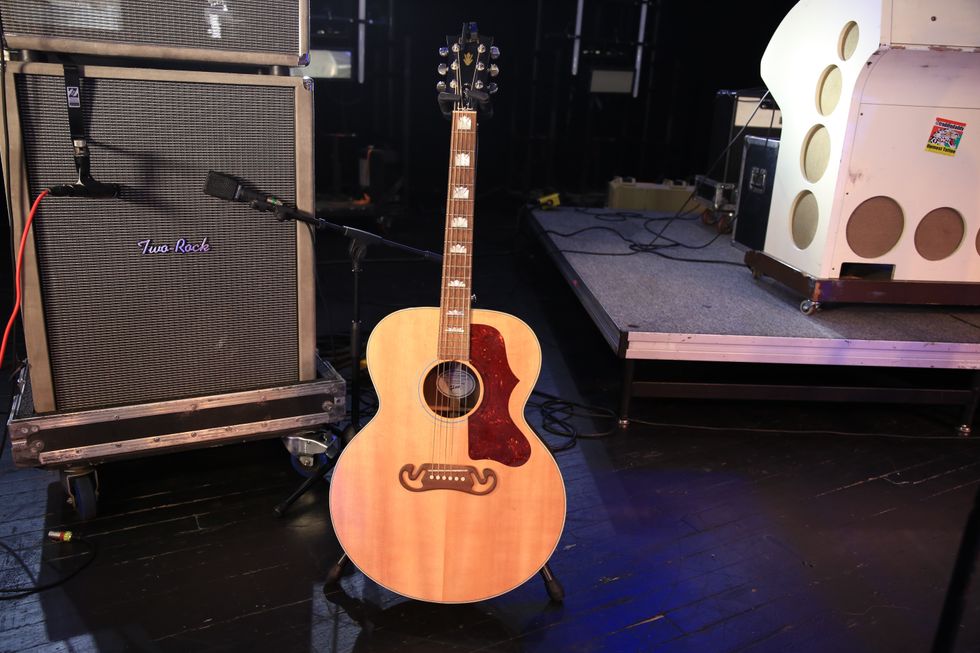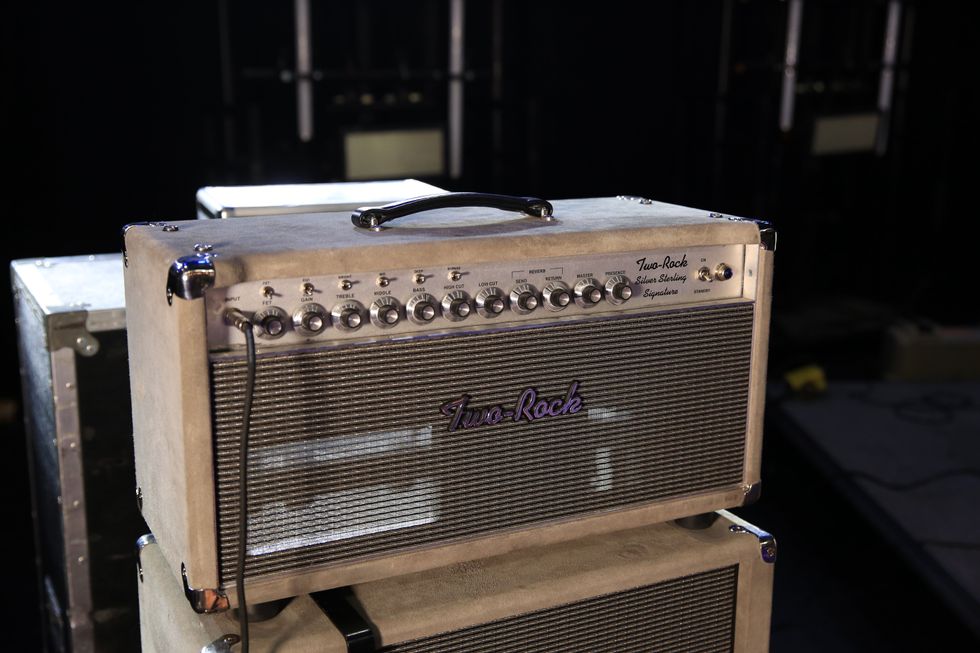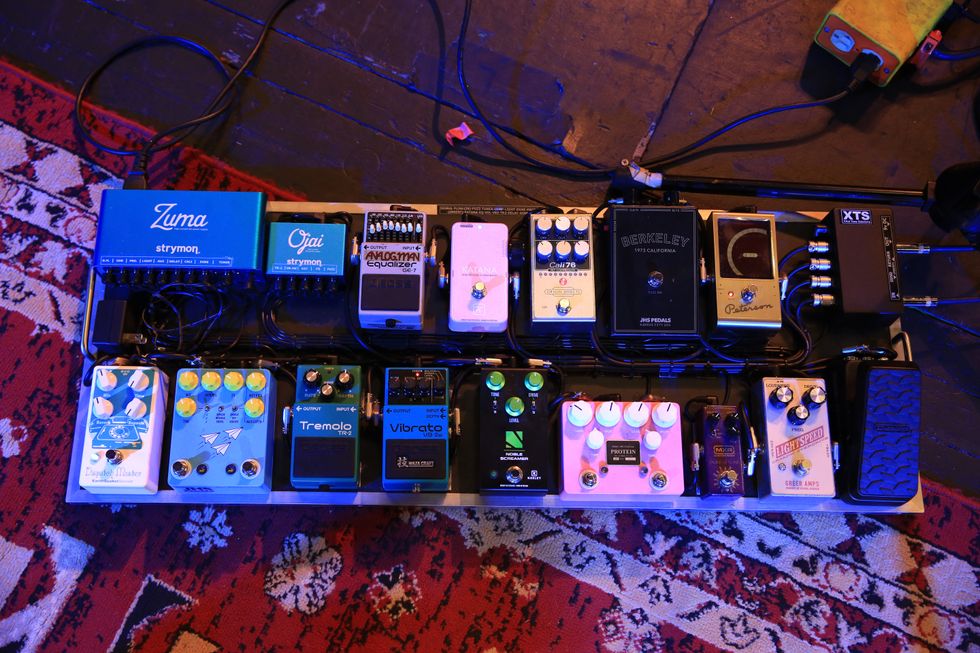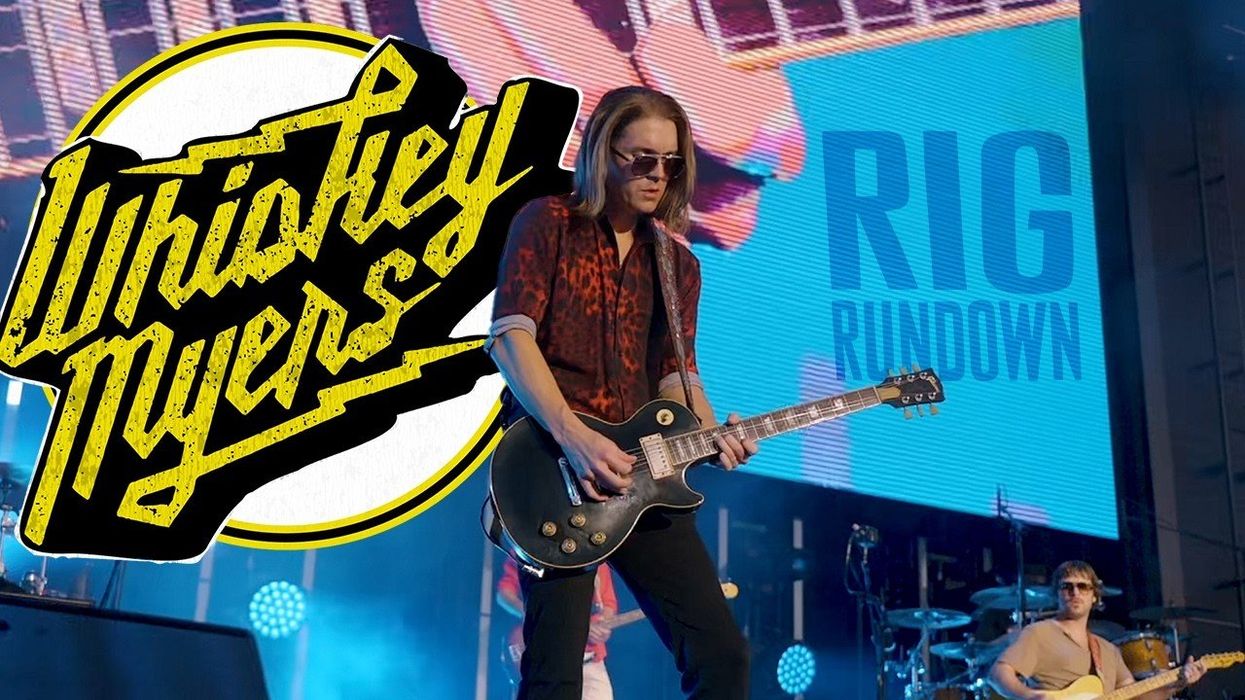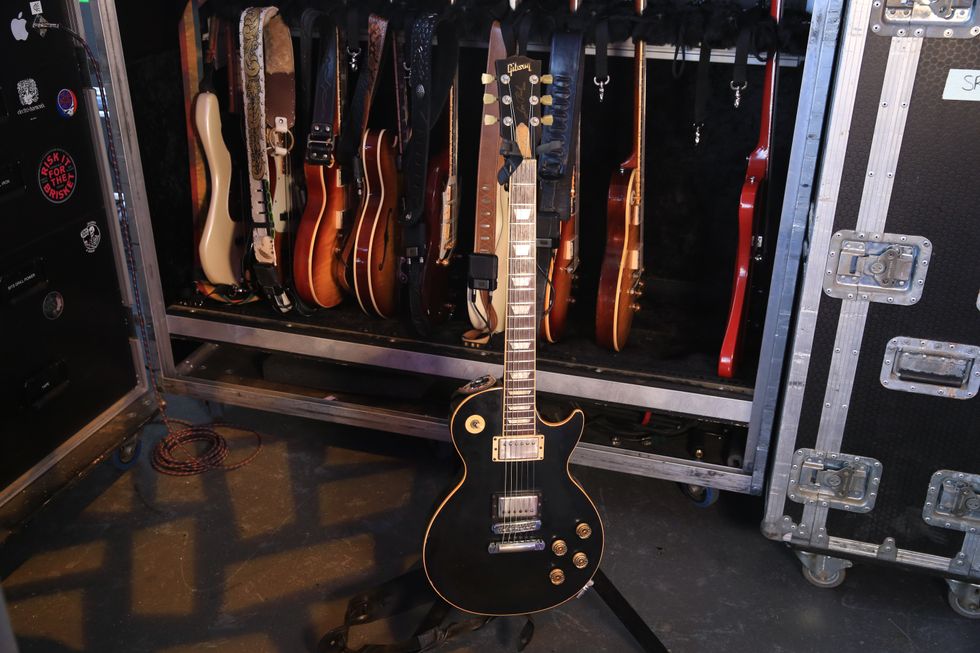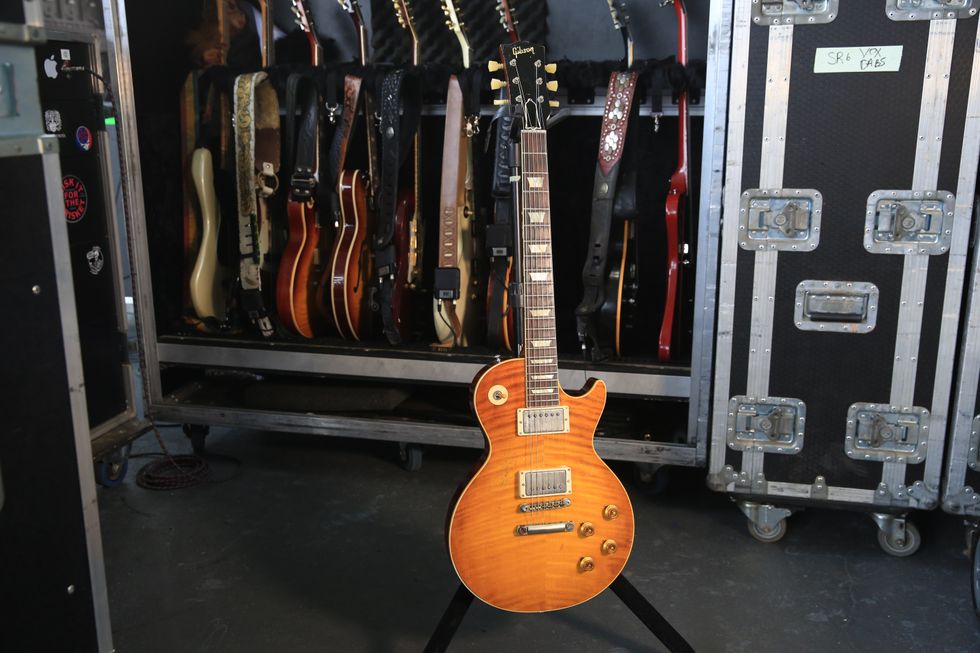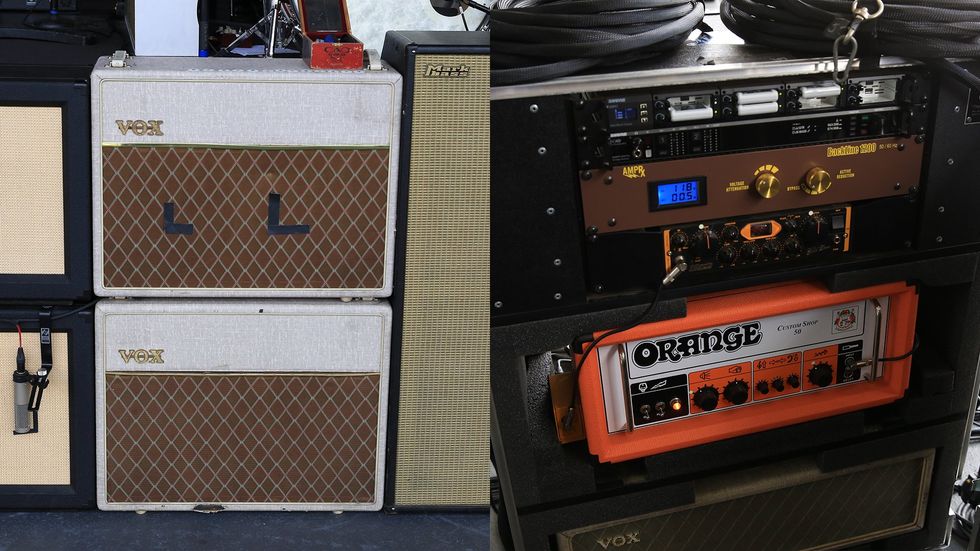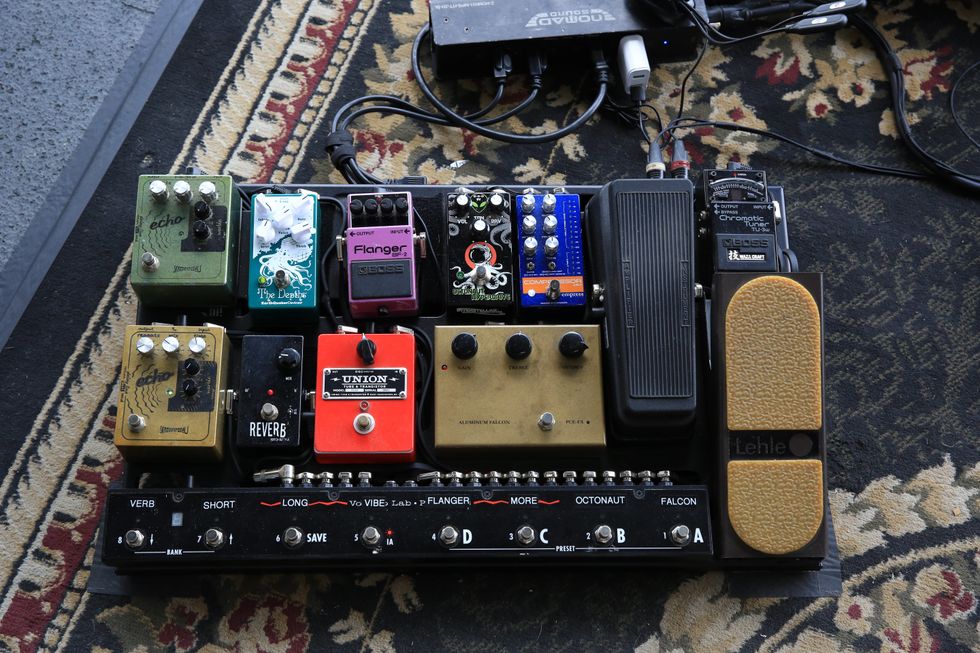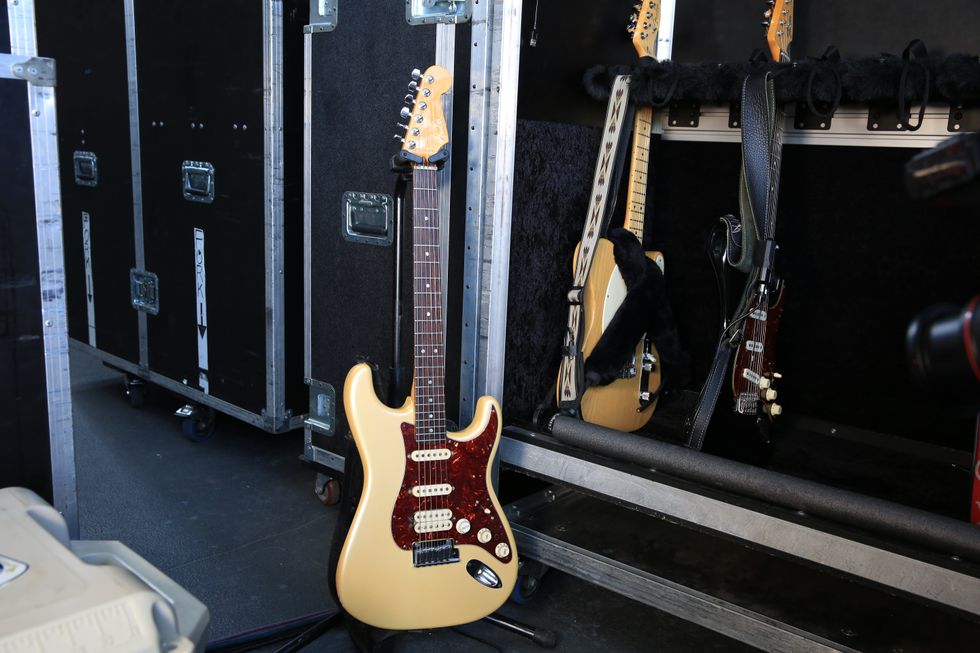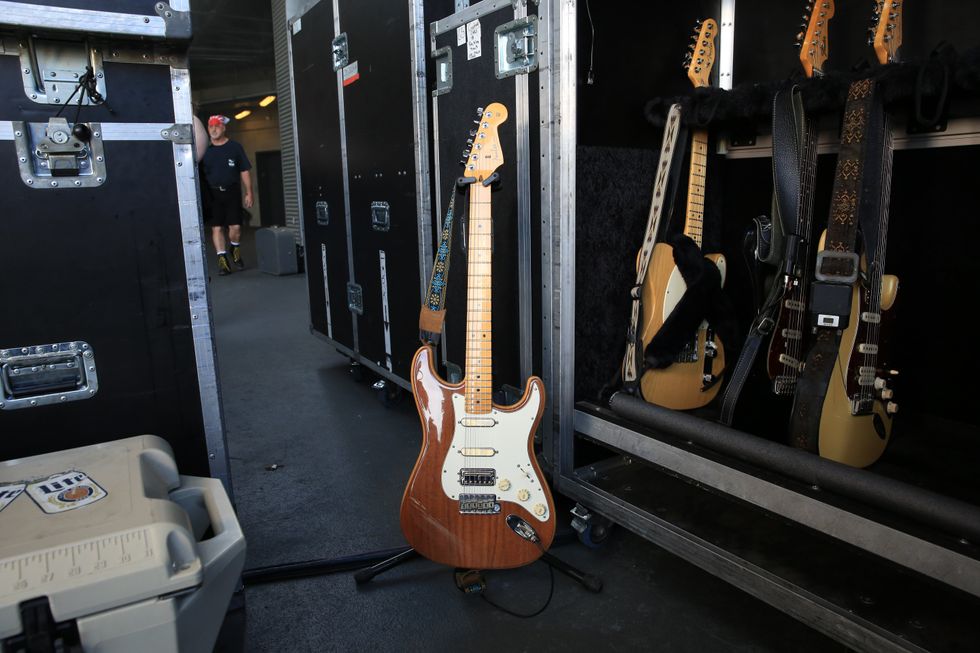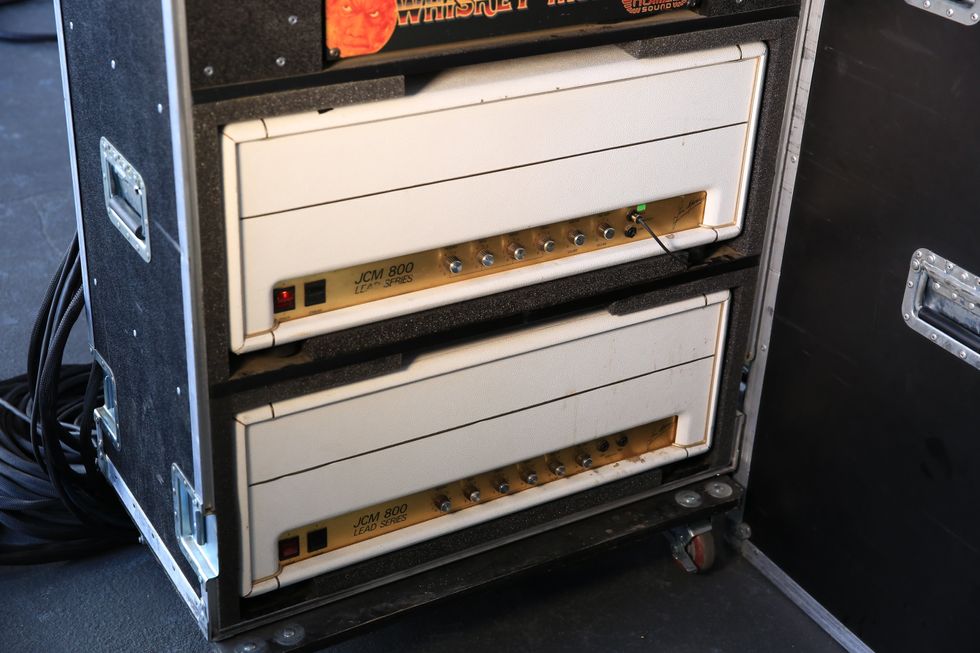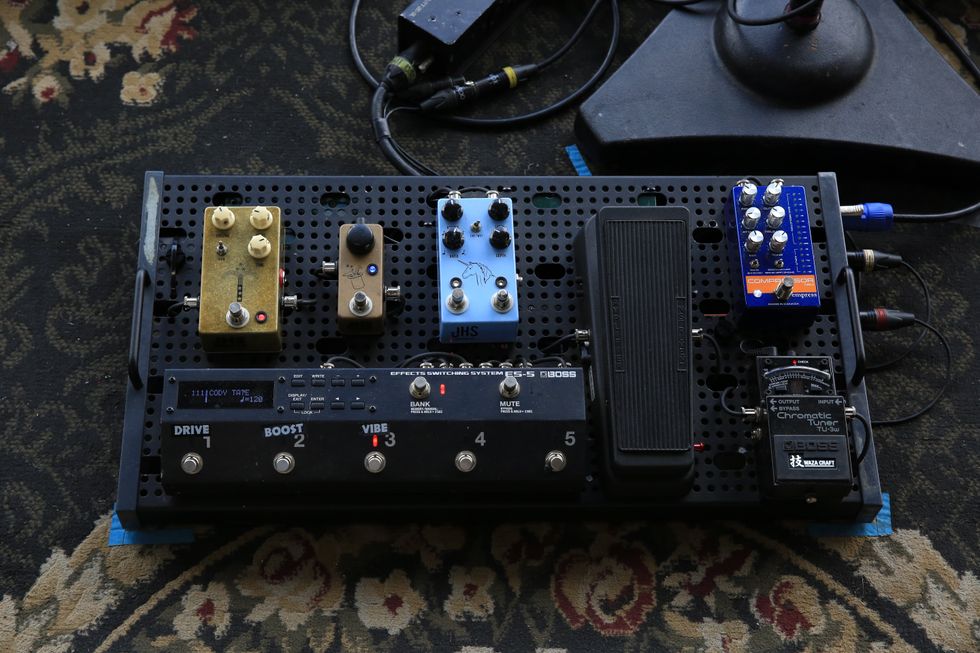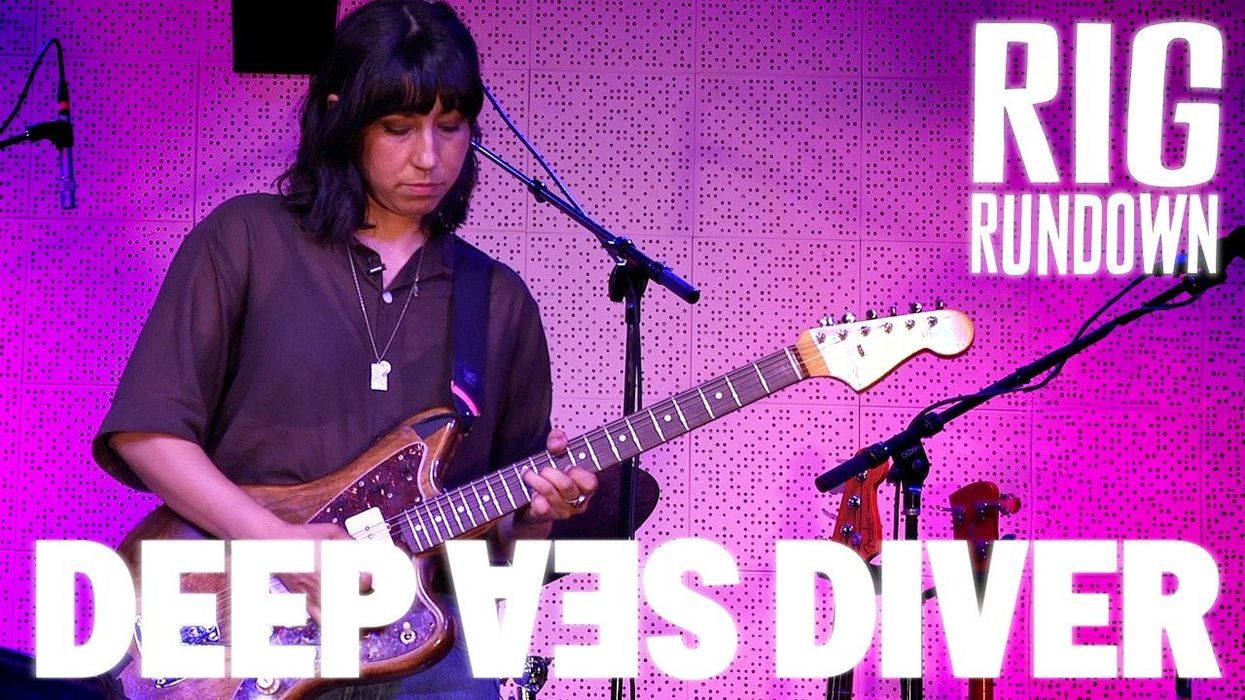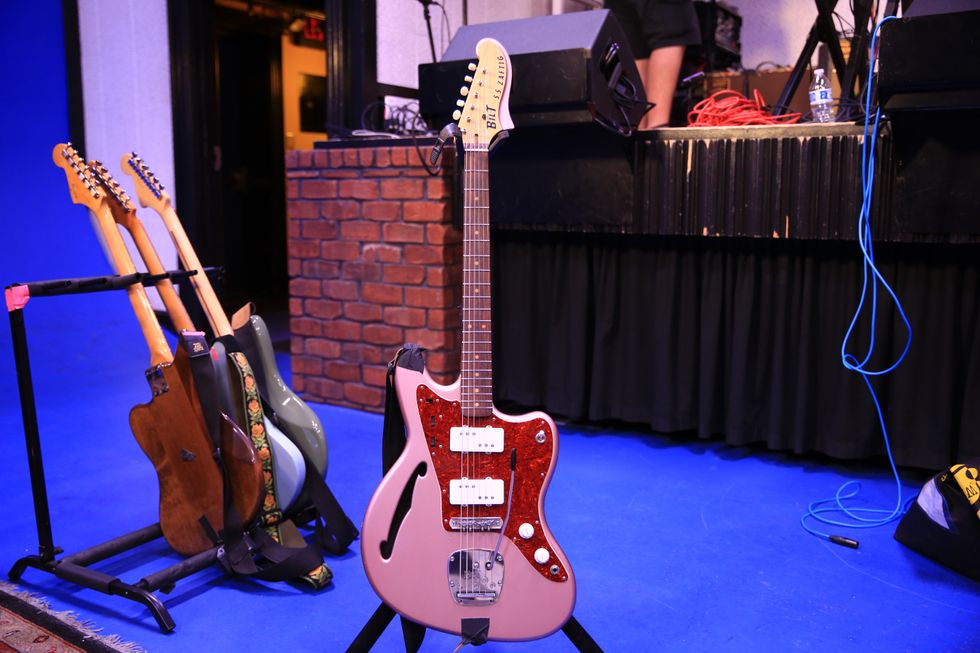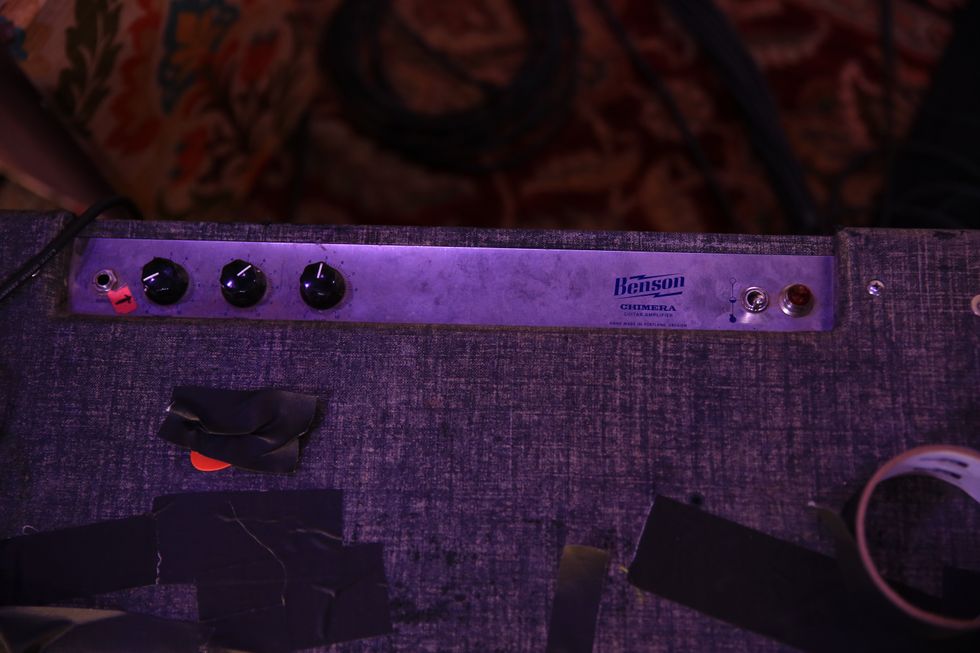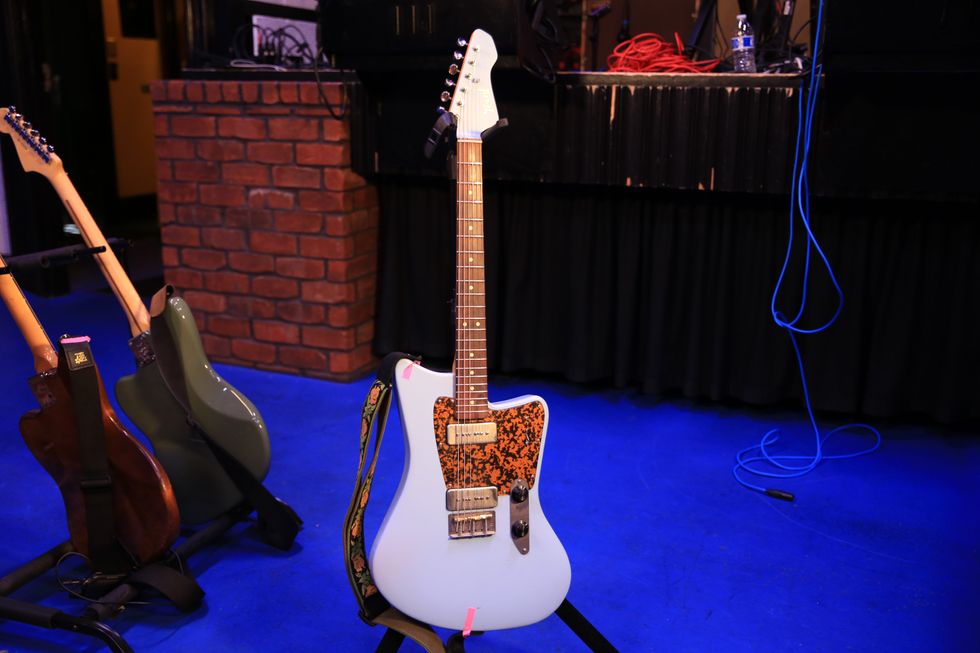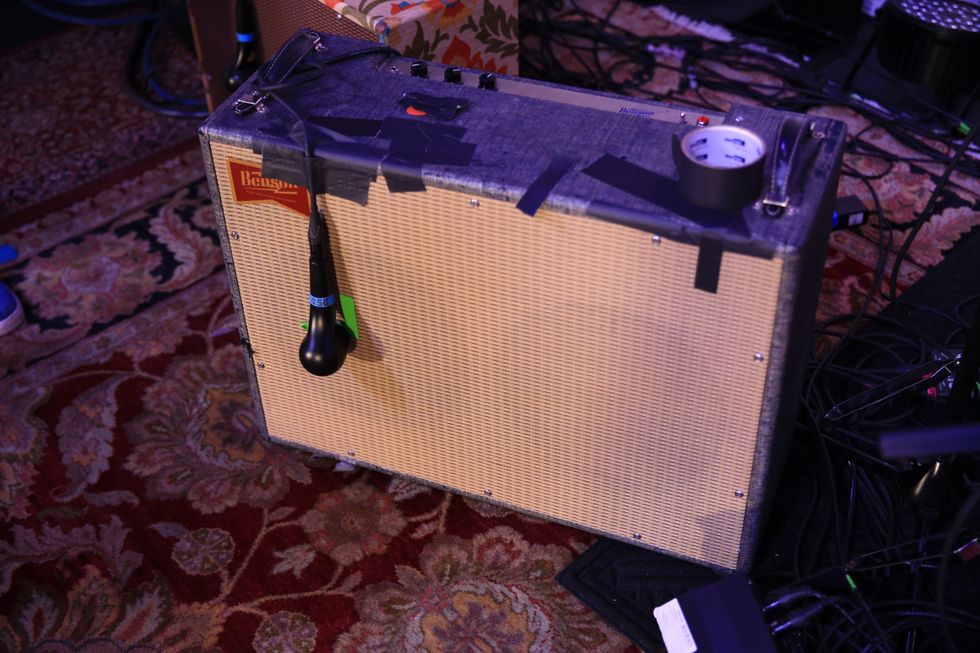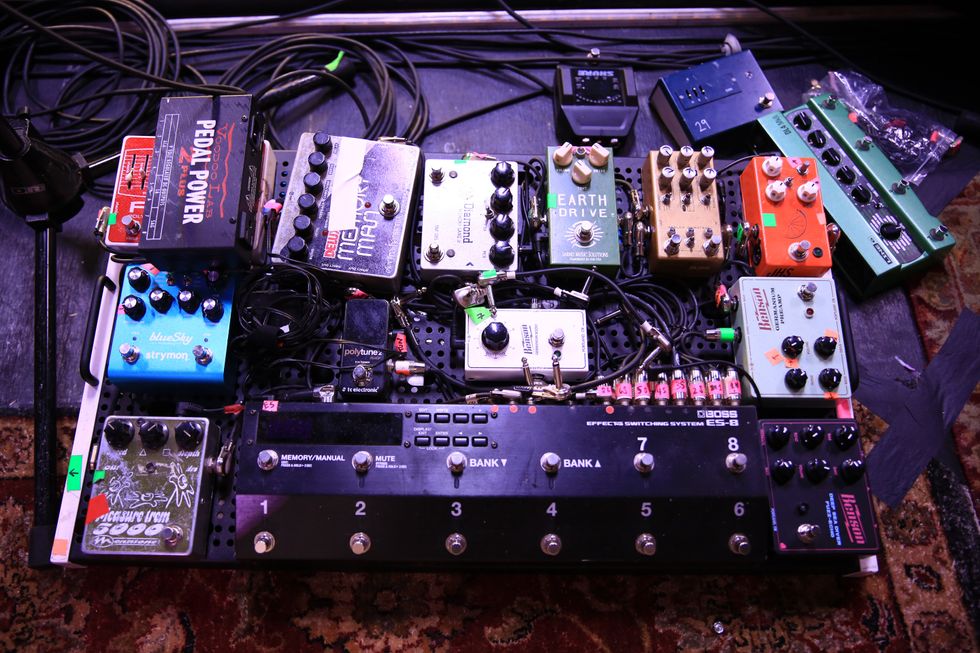Norwegian metal titans Kvelertak are a band in transition. They have a new frontman, Ivar Nikolaisen, who replaced founding vocalist Erlend Hjelvik, and Håvard Takle Ohr took over on drums from the departed Kjetil Gjermundrød. That’s created a new dynamic that has impacted their sound—particularly with Nikolaisen’s expanded range and melodic depth, which has let them experiment with things like more complex interlocking guitar and vocal lines, and anthemic hooks.
On the gear front, after almost a decade-long association with Orange amplifiers, Kvelertak took the plunge and embraced Kemper digital profilers, which solved multiple problems, especially when touring.
“The Kemper is easy to bring around. You have your same sound everywhere you go, you know what you’re getting, and it’s solid,” says guitarist Maciek Ofstad. “The reason we went for the Kemper is, you profile your own amp. I still have my Orange Thunderverb 50. It’s just in a computer now, which is strange, but you can’t hear the difference at all. I hate to say it, but the zeros and ones … they work.”
But some things haven’t changed. Kvelertak is still a triple-guitar threat, featuring Ofstad, Vidar Landa, and Bjarte Lund Rolland, plus bassist Marvin Nygaard. And their signature sound is still heavy-yet-singable metal. They also went back to GodCity Studio in Salem, Massachusetts, and reunited with producer and Converge guitarist Kurt Ballou to record their most recent album, Splid, after cutting their previous release, 2016’s Nattesferd, in Norway with Nick Terry.
Splid differs from its predecessor in that the guitar parts were layered one at a time, as opposed to being recorded live. “We were lucky,” Ofstad adds. “Our new drummer, Hårvard, had a week to record all the drums, but he was done in three days. That gave us a lot more time to mess around. We had the ability to try different things and experiment. When we do this stuff in the rehearsal space, you play your part and that’s it. But when you sit in the studio, you can play ball with Kurt and the other guys in the band, and try other things.”
Splid showcases Nikolaisen’s melodic abilities on tracks like “Tevling” and the power-pop-leaning “Uglas Hegemoni,” but despite that finesse, this is not a kinder, gentler, Kvelertak. The album still burns with their brand of riff-centric metal, especially on songs like the opener “Rogaland” and the almost proggy “Stevnemøte Med Satan.”
“We’re often very inspired by the bands we tour with,” Landa says, which helps explain the diversity of Kvelertak’s catalog. “I feel like every tour we’ve done, there’s always a new song after that tour that ends up on the album, which is inspired by the bands we toured with. You can clearly hear some Mastodon influences on this new album. On Nattesferd, we came back from a tour with Slayer and Anthrax, so on a song like “Berserkr,” for example, that was because we wanted a Slayer-type song after that tour. When you hear a band every night when you’re on tour, even if it’s not always something you aim to do, it just happens. There are so many different influences with Kvelertak, and it’s been like that from the start.”
Premier Guitar spoke with Ofstad and Landa as Kvelertak were getting ready to hit the road in support of Splid. We discussed their recent switch to Kemper digital profiling amps, their experiences recording with Ballou, the joys of rehearsing and writing with their new lead singer, and why it’s not anathema to add bongos to a heavy metal album.
When did you join the band?
Maciek Ofstad: I joined in 2009, and the band started in 2006. I didn’t join for the first demo, but things didn’t really start happening until they got a new drummer. Marvin played drums before that, and he can’t play drums.
Vidar Landa: I played bass in the beginning. I’ve always been a guitarist, but at the time I was done playing in bands. Marvin had these friends that he had met at school—Bjarte and Erlend—and they were starting a new band. Marvin was playing drums, and he said that I should play bass … do something different. After a while, we figured out that it was better to go back to the instruments that we actually play well.
How did you become a three-guitar band?
Ofstad: It was more of a cool thing than it was anything else. At least, that’s my perspective. Bjarte would say something different—that he wrote the songs to fit three guitars—and there is so much going on in there that it definitely helps being three. At one point we were four [laughs], but that was for a second. Then we figured out that that was a stupid idea, and we went back to three, which is still a lot of guitars.
What do you do to distinguish tones, so that you each stand out?
Landa: We didn’t really do too much about that before we started recording. We didn’t have any money, so we played the guitars and the amps we had.
Ofstad: That took a good while. Over the years, we definitely started to leave space and think about how this shit actually sounds [laughs]. I feel like from about 2014 or 2015, somewhere around there, we nailed who is where in the picture. But I don’t think you can ever get good enough. You have to experiment as you go. We’re in a good place guitar-wise right now.
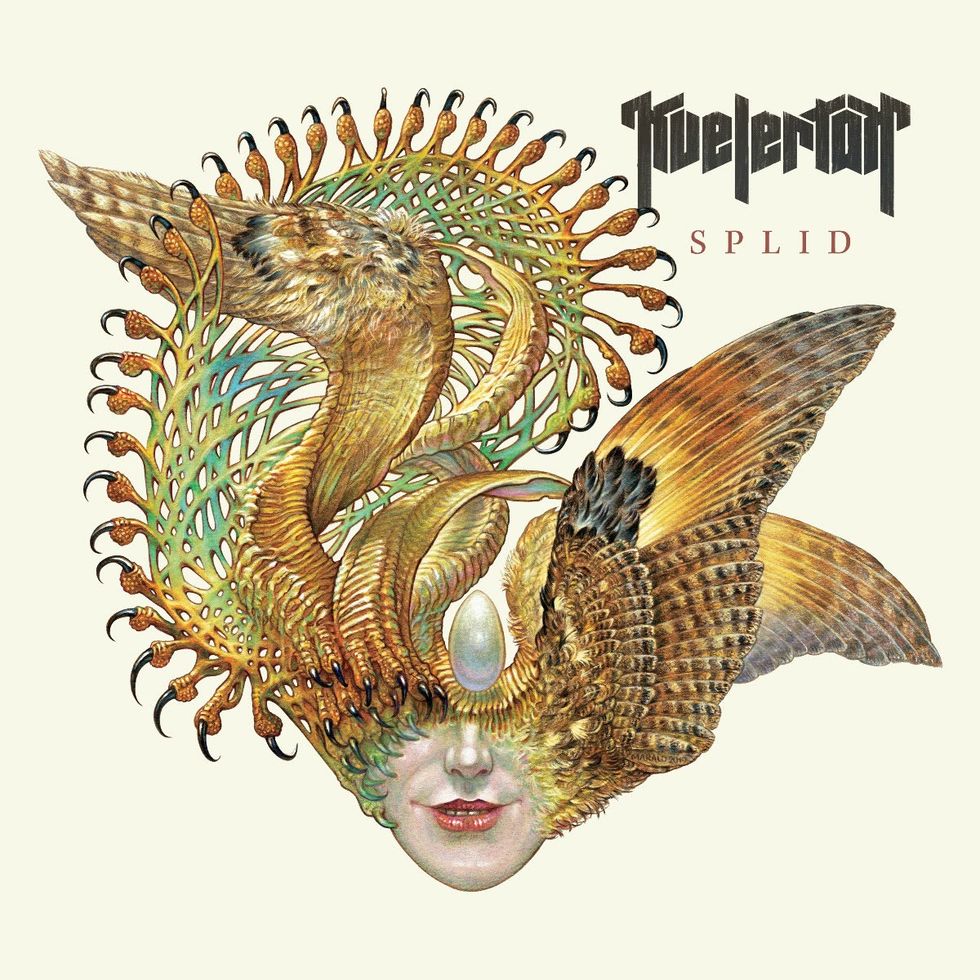
TIDBIT: The band used producer Kurt Ballou’s extensive collection of amps, pedals, and guitars to cut their new album. “He has a lot of pedals that he’s built himself or modified,” says Vidar Landa.
You recently switched to Kemper profilers, why did you make the change?
Ofstad: We did a tour with Metallica, and when we did that tour, we had to be self-served with monitoring. We started using in-ear monitors, which was super weird, but after a while that was very nice, and we also had these Box of Doom isolation cabinets with us. We were carrying so much weight on tour that the bus company that we were using at the time didn’t want to bring the gear anymore. We were just too heavy. We were also flying around, doing these festivals in Europe. We’ve always rented the backline from whatever backline company the festival is using, but you don’t really ever know what you’re going to get, and every amp sounds kind of different. We tried out the Kemper thing to lose the weight—a Kemper weighs like six kilos [about 13 pounds], and you can have it in your backpack. We were very divided—we had very mixed feelings about playing a digital computer—but it works really well. It makes touring very easy. We all still prefer normal stuff, but for the road it’s a very simple setup.
Landa: I can’t really tell the difference, especially because we use much high gain. Kemper has become so good now that I can’t really tell if it’s the Kemper I am playing or my Rockerverb. I can still hear the difference on the cleaner tones, but on the high-gain stuff, the digital amps are getting pretty good.
Do you profile your pedals, too, or do you travel with them separately?
Landa: You can, and I tried that. I simulated and recorded all my tones from my pedals, but I just found it so weird. Those knobs are so small, and that makes the board easier for traveling, but it just felt so weird onstage to not have my pedals. I use my pedals through the Kemper.
Ofstad: I still use pedals, too. I tried the built-in effects, and it works well, but I keep stomping on the wrong thing and changing presets. I fuck up so much, I need normal pedals.
You recorded your new album with Kurt Ballou, at his studio, GodCity. He recorded your first two albums, too, but didn’t record your previous release, Nattesferd. Why did you go back?
Ofstad: There are a lot of reasons. First, the songs we made fit Kurt’s sound really well. We wanted to work with Kurt again, and we wanted to have that sound. Also, going through all the changes we had internally with the band—changing the drummer and singer—to go to another studio is to add another uncertain thing. Is this going to work? Are we going to hit it off with this producer? Going to Kurt was safe. You know what you get, and what you get is really fucking good. Also, we missed Kurt. We missed his face [laughs].
How did you meet him?
Ofstad: We sent some demos to Kurt back in 2009. We made a list of who we wanted to work with, and said, “Let’s shoot Kurt Ballou an email.” We were definitely not expecting to get a response at all, but it was worth a try. He hit us up a couple days later. He wrote, “Fuck yeah; let’s do this,” and that was it.
Maciek Ofstad in his pre-Kemper days, slamming his 2000 Gibson SG in front of his Orange Rockerverb. His pedalboard includes an MXR Carbon Copy and EVH-90, a TC Electronic Hall of Fame Reverb, a Fulltone Fulldrive 2 Mosfet, and an Electro-Harmonix Micro POG, among other stomps. Photo by Tim Bugbee/Tinnitus Photography
How involved is he as a producer? Does he help with songwriting?
Landa: He brings a lot to the table, and he’s been pretty important in terms of how our sound got formed. He can probably be that kind of producer, but with us he doesn’t get too involved in the songwriting. When we did the first album, we did some rearrangements that he wanted to do, but most of the times we have finished songs. He is sort of like a sound producer and engineer, and our albums wouldn’t have sounded the same without him. He often suggest tempos, where to put more guitars, where to have less guitars, what type of sound would fit different parts, and he just has really good ideas.
Ofstad: He hears the demo and says things like, “We should use this guitar for this, or this should have this sound.” He’s really good at mapping out the sound aspect of things very quickly. It’s nice to have a dude that you 100 percent trust when it comes to guitar tone and effects. He also has some insane ideas like putting bongo drums here and there, and going wild sometimes, which is also cool.
He has a lot of analog gear. Did you record to tape?
Landa: No, we record digitally, to Pro Tools. On the first album, we recorded the drums to tape, but we only did that on the first album.
Do you bring your gear from Norway or use what’s in GodCity?
Landa: This time we didn’t bring anything. That’s also one of the main reasons we go to Kurt—because he has so much gear at his studio, and he knows his studio and that room so well. He has an arsenal of different amps, old and new ones, and we often spend a lot of time finding four main amps and sounds that we like that we put up. He has a lot of pedals that he’s built himself or modified. Same with the guitars. He has a lot of weird guitars that he put together himself that we use.
Ofstad: We flew over there with absolutely nothing. We learned that from the first time, when we flew in with cymbals, guitars, pedals, and ended up using none of it. He is stacked to the roof with endless amounts of awesome gear. We’re there for a reason: to work with him and his sound, and he gets that sound from all the shit he has in the studio. He has all these weird pedals that I’ve never seen before. He has monstrous guitars. Most of the solos on the album were recorded on this guitar with a Mustang body and a Dean neck. This hybrid, horrible, terrible-looking guitar, but it sounds insane.
Did you use pedals or amps that you would never use live?
Landa: A lot of those pedals are things he built himself, and those are kits you can buy from him and put together yourself. Most of the pedals that we used aren’t things that I actually have on my pedalboard.
When you record the guitar parts, do the three of you stand together and play together, or do you record one guitar at a time?
Ofstad: One guitar part at a time, this time. On Nattesferd we did everything live, but for this new album we were stacking tracks.
Landa: With Kurt, we record to a click. We do all the drums first. One of us is always playing with the drums just for a lead track, and then afterwards we start with the rhythm guitars. We record one guitar at a time. But for the last album, we were in a room together and did everything live. We’ve done both, and they are very different processes.

Guitars
Two Nik Huber Krautster IIs
Nik Huber Rietbergen
Amps
Orange Rockerverb 100 MKIII
Kemper Profiler Power Rack with internal 600-watt class-D power amp
Effects
Foxrox Octron
KMA Machines Astrospurt phaser
MXR Analog Chorus
MXR Custom Badass ’78 Distortion
T-Rex reverb
Boss TU-3 Chromatic Tuner
Strings and Picks
Any brand (.011–.048)
Dunlop Yellow .73 mm
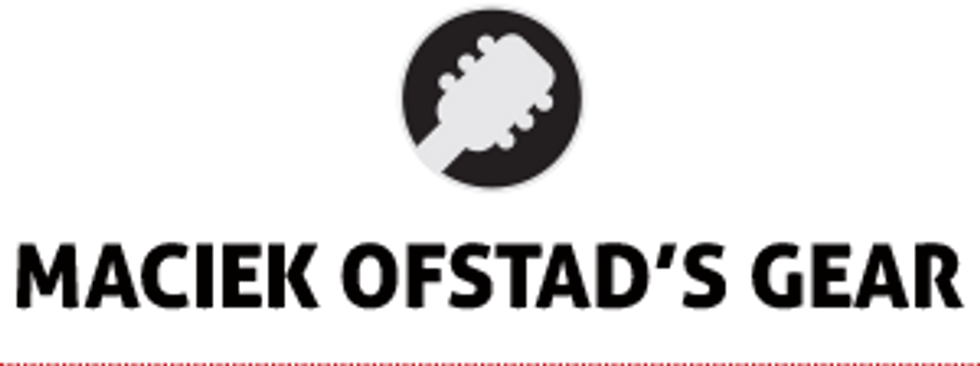
Guitars
2000 Gibson SG
1990 Gibson Flying V
Amps
Orange Thunderverb 200
Orange Thunderverb 50
Kemper Profiler Power Rack with internal 600-watt class-D power amp
Effects
Boss TU-3 Chromatic Tuner
MXR Carbon Copy
MXR EVH-90 Phase 90
TC Electronic Hall of Fame Reverb
Fulltone Fulldrive 2 Mosfet
Electro Harmonix Micro POG
Dunlop Cry Baby GCB95 wah
MXR M109 6-Band Graphic EQ
Kemper Profile Remote Foot Controller
Strings and Picks
Ernie Ball Skinny Top Heavy Bottom (.010–.052)
Dunlop Yellow .73 mm
How does that change the sound of the album?
Landa: It’s hard to tell if it’s only layering the guitars and doing them one at a time that changes the sound, or if it’s the playing. The sound is tighter doing it the way we do it with Kurt, and you also have more time to play around with the sounds. When we did it live last time, we found a main sound that we liked and used the pedals that we normally use. The idea was that everything should be done live without too many overdubs, and to have more of the same vibe or feeling over the whole album. But Kurt will switch up both the rhythm guitar sounds and the lead guitar sounds for every song. I like both. I really enjoy recording with Kurt because we get these amazing guitar tones and it’s super fun to play around with those. At the same time, I feel that my playing is better and I enjoy it more when we record playing together, instead of hearing only one guitar and every single detail.
You feed off the energy of the other players?
Landa: Sometimes when you sit playing one guitar, and you just listen to one guitar, you start hearing all these small … not mistakes, but noises or whatever, and then you play it until it’s perfect. We’re more picky—it’s almost like a robot was playing it, and I don’t like that. But when we play together—all three of us, or only two, or with the band—you listen to how it sounds together, instead of listening to one guitar. Sometimes there’s a certain vibe to not playing every single note the exact same way every time. That’s the main difference between the album we did where we recorded live and what we do with Kurt.
How loyal are you to the solos recorded on the album? Do you plan them out beforehand or do you improvise?
Ofstad: I always wait. I don’t think I’ve ever made a solo and then gone into the studio and just recorded it. I need to try different things out. I did myself a terrible disservice recording a bunch of solos with a Floyd Rose this time. We played a show yesterday, and I don’t own any guitars with a Floyd Rose system. I spent most of the day today trying to find one. I need a guitar that can dive bomb, but they’re so ugly—the dive bomb guitars are hideous—but I found out that Floyd Rose has an FRX surface-mount system that you can mount on an SG. You don’t have to drill holes. They have one in Norway, so I ordered that today.
Landa: A lot of the solos are made up in the studio. Depending on the song. Some of the more melodic songs often have a solo that goes over the lead part, or goes from the lead part and into a solo, and those are sometimes ready beforehand. A lot of the other stuff, like the thrash metal solos that Maciek does in the studio, are things that are made up in the studio. Then we have to relearn it when we get home to play live, because nobody remembers what was played and how it was played.
How do you put your songs together?
Ofstad: BJ (Bjarte), the pick-less guitarist, he is the main songwriter. Marvin lives in a different city, so we fly him in and spend five or six days in our rehearsal space. We either rehearse the songs that BJ brings—and those are always 99 percent done—or sometimes, if someone has a riff, we try that out. Maybe that works, and we try to build the song riff by riff. There are three of those songs on the album. The most recent single, “Fanden ta Dette Hull!,” was that kind of song, where we started out with that first riff on a Monday, and by Friday we had the whole song. Those are the two processes that we work with.
It’s probably hard to jam with such a large band.
Ofstad: It takes a lot of time, but it’s fun when it actually works. We can be stuck with a song for weeks or months and it doesn’t go anywhere. Suddenly, when it happens—someone has one different idea, and the ball gets rolling—the whole song fits. Those epiphanies are fun. Sometimes, when we sit in that rehearsal space, it’s like being in rehearsal jail, because it’s impossible to get anywhere. But you need those hours to grind and grind, and then suddenly it works.
Vidar Landa plays his Nik Huber Krautster II in close quarters with bassist Marvin Nygaard, who played drums in Kvelertak when the band began. Landa was the original bassist. “After a while, we figured out that it was better to go back to the instruments that we actually play well,” Landa says. Photo by Tim Bugbee/Tinnitus Photography
This is your first album with the new singer. How has that changed the band’s dynamic?
Landa: He brought a new energy into the rehearsal room, because he’s eager and stoked on doing this album. He’s always at rehearsals, even though he doesn’t play guitar and we’re not writing lyrics in the beginning, but he’s around and he has ideas. If there’s a riff or song that he likes, he pushes them through. That’s been very cool with this album, to have him engaged in the songwriting from the beginning.
Ofstad: It has to be very boring to be the singer in a process like that, because there is so much sitting around. But it is so cool to have him in the process. As soon as we have just the contours of a song—like this might happen—he’s already there writing stuff up and singing on it. That pumps us up. He also has a range that we didn’t have in the band before. This is the first time we wrote an album thinking about vocal melodies. We wanted to try different things, because Ivar has the ability to do it.
What are some examples?
Landa: There’s a song called “Tevling,” which starts off more like a power-rock ballad, where Ivar sings over guitar. To scream over that wouldn’t have sounded cool. So that song is something we probably couldn’t have done before. There’s also “Uglas hegemoni,” which has more of a punk or power-pop vibe to it, where he’s more singing than screaming. That is also something that we haven’t really done before, although we touched on it. You can hear the inspiration and riffs, but we haven’t taken it that far before.
You also mentioned that there are bongos on this record, which is unusual for a metal album.
Ofstad: Yeah, don’t underestimate the bongo, man.
Although new singer Ivar Nikolaisen has helped Kvelertak usher in a fresh approach, the band still reprises its earlier material in concert, including the big guitar stompdown “Offernatt” from their debut album, performed here at Germany’s Wacken Open Air metal festival in 2019.


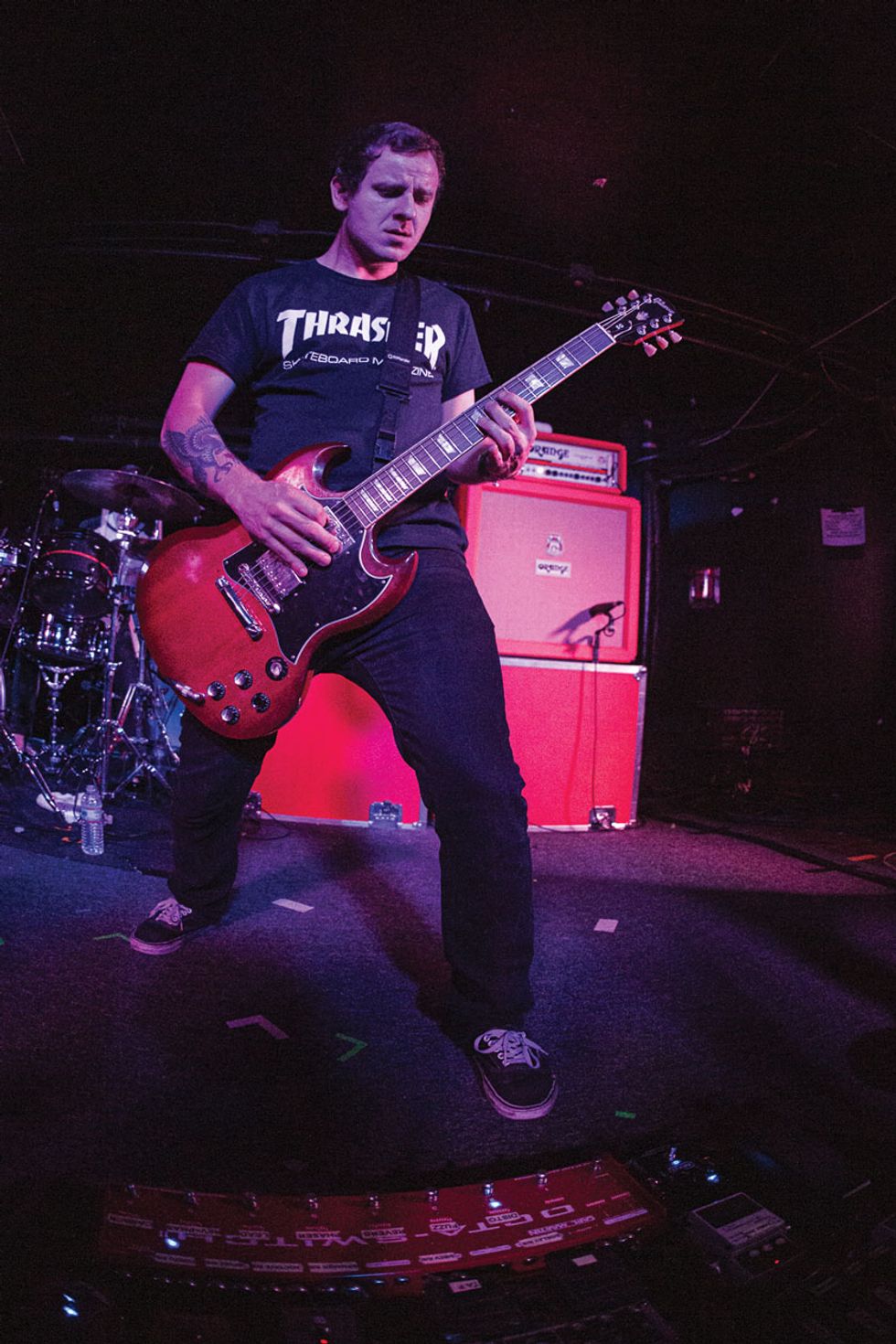
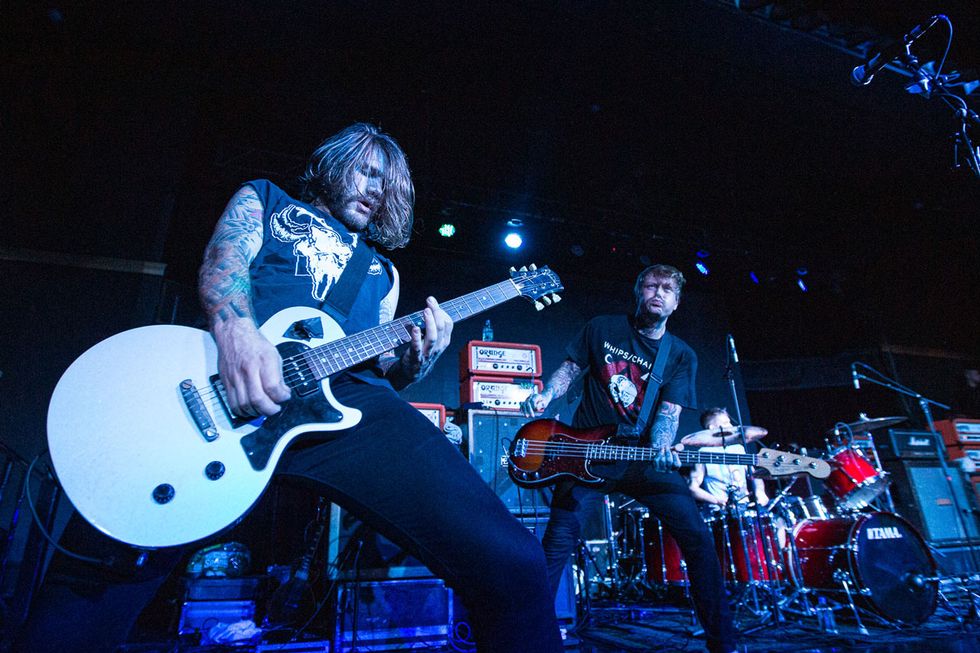
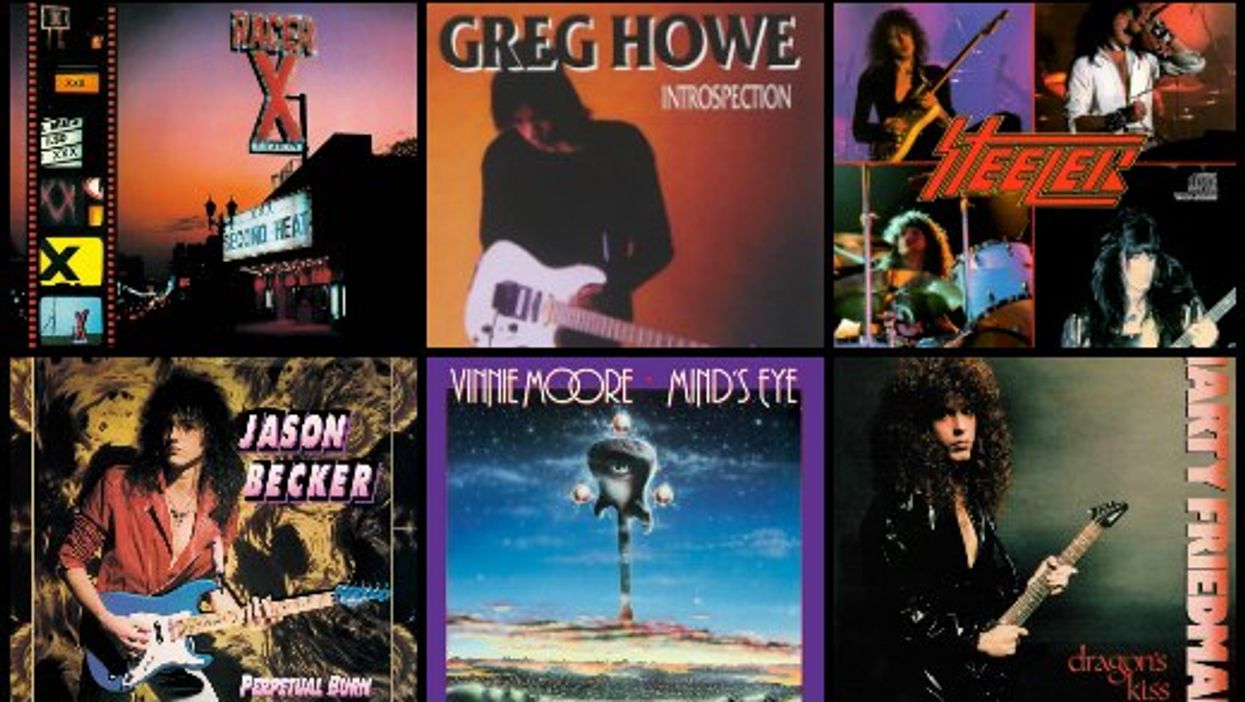
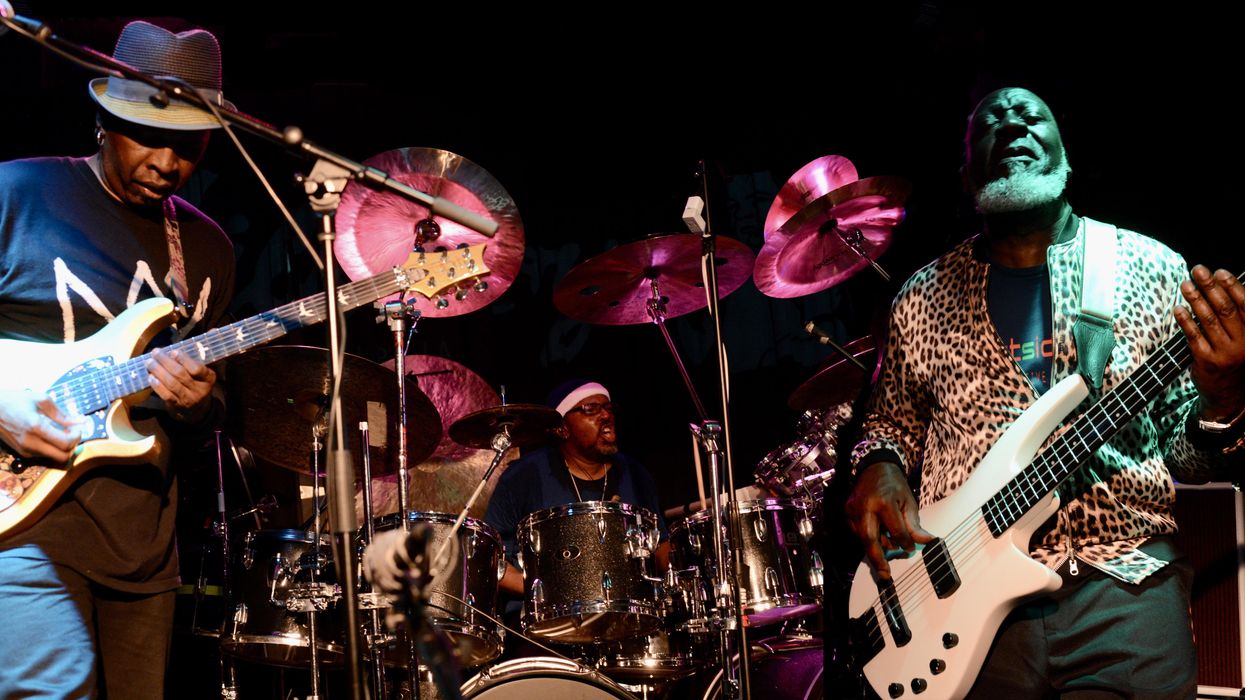
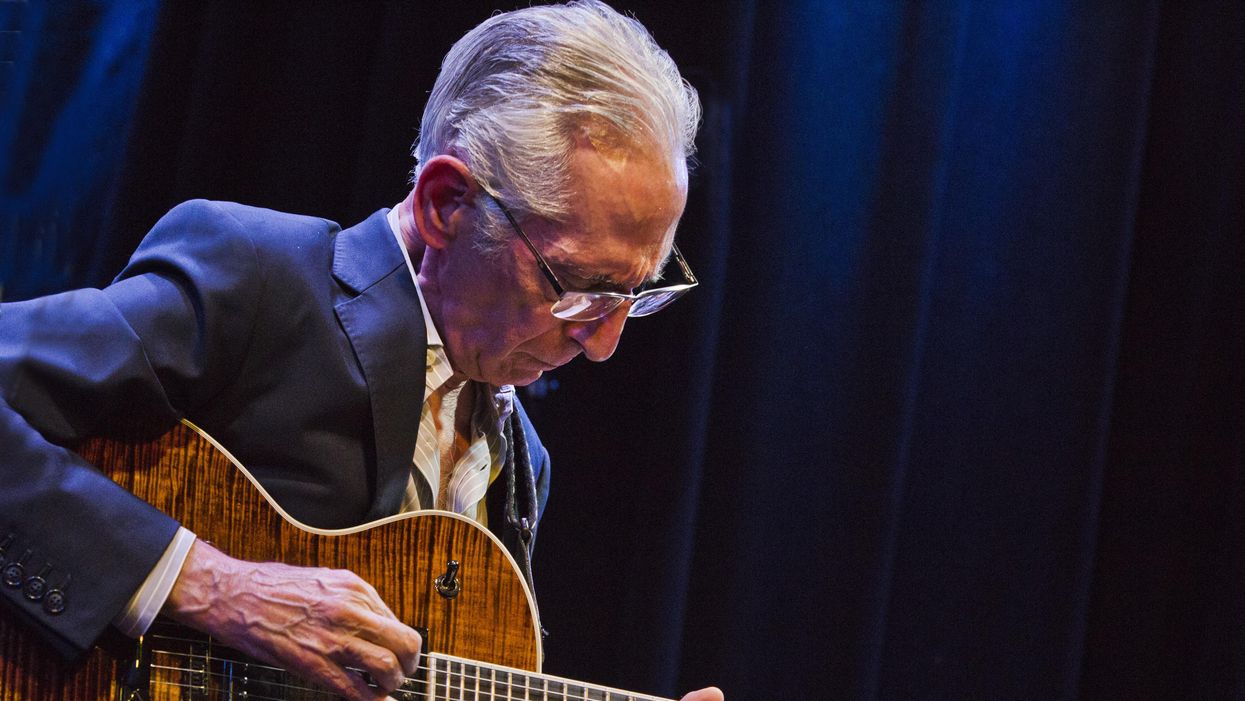

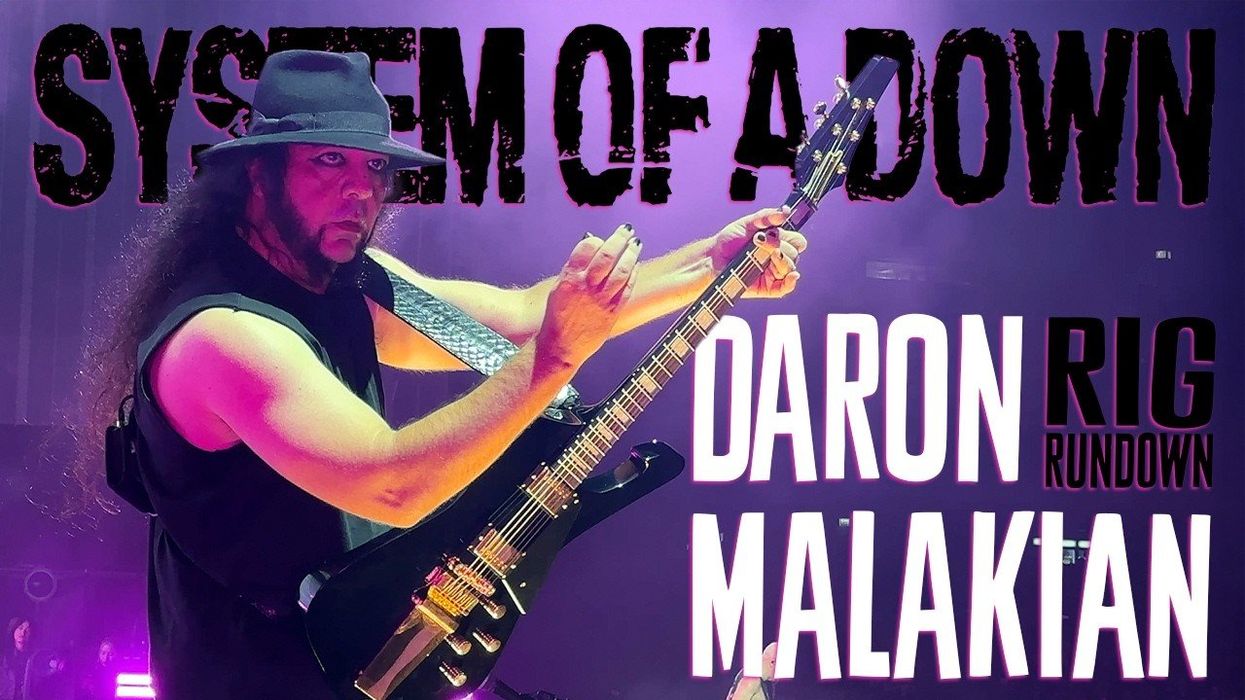
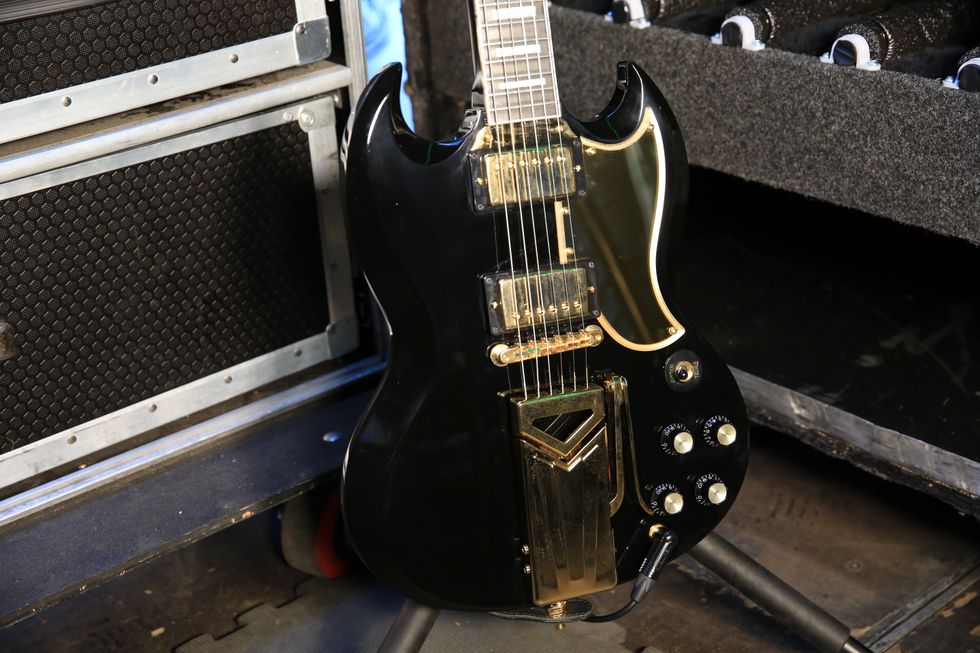
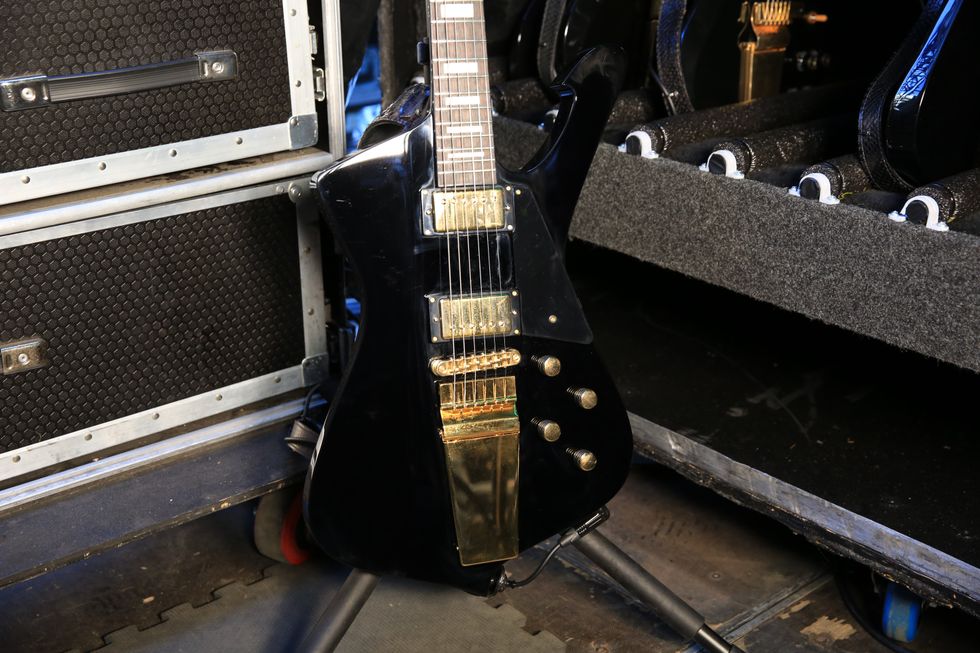
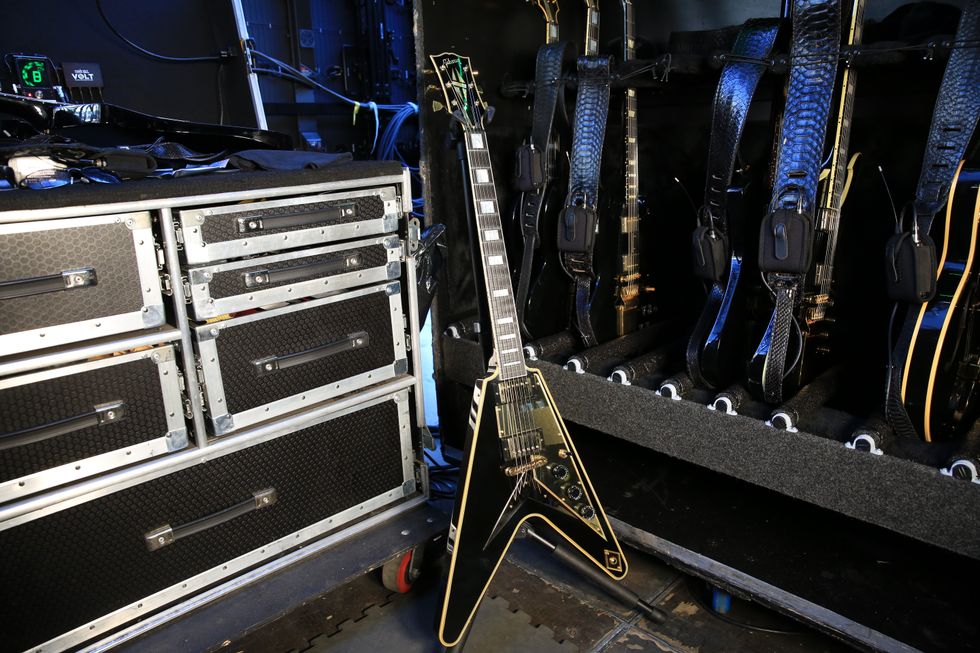
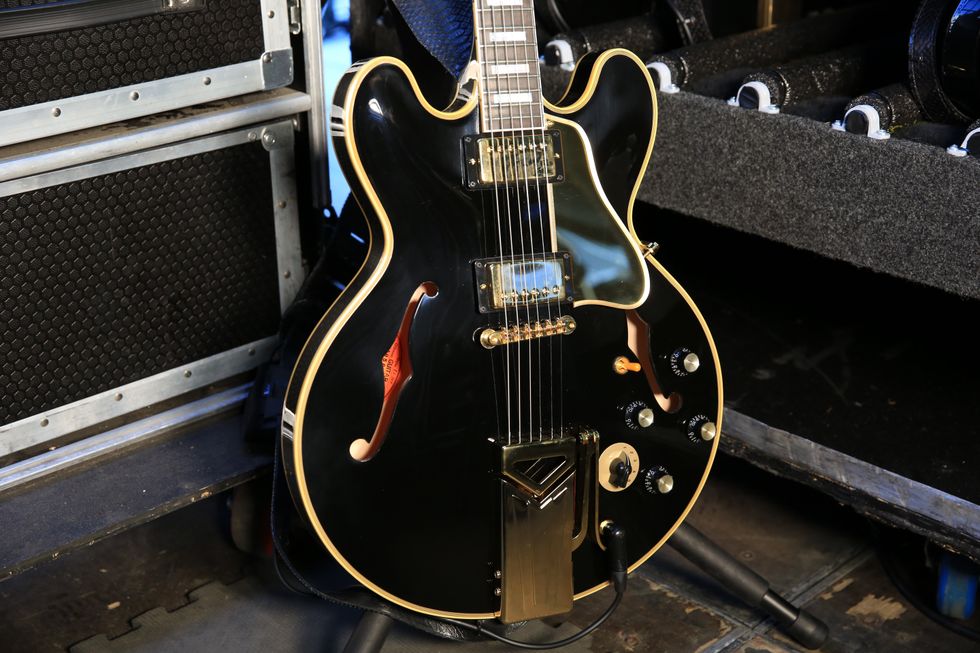
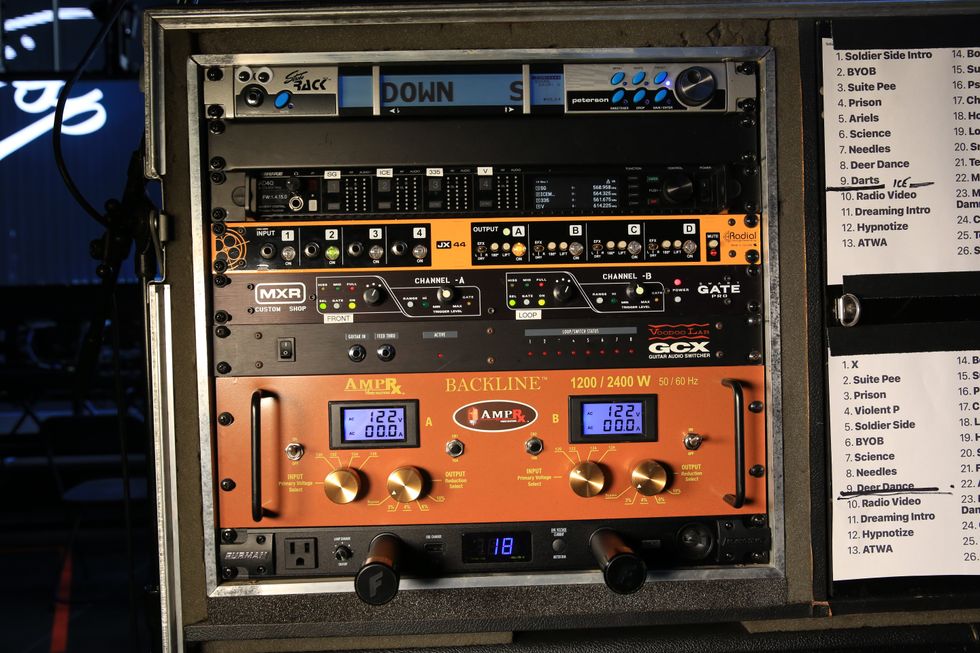
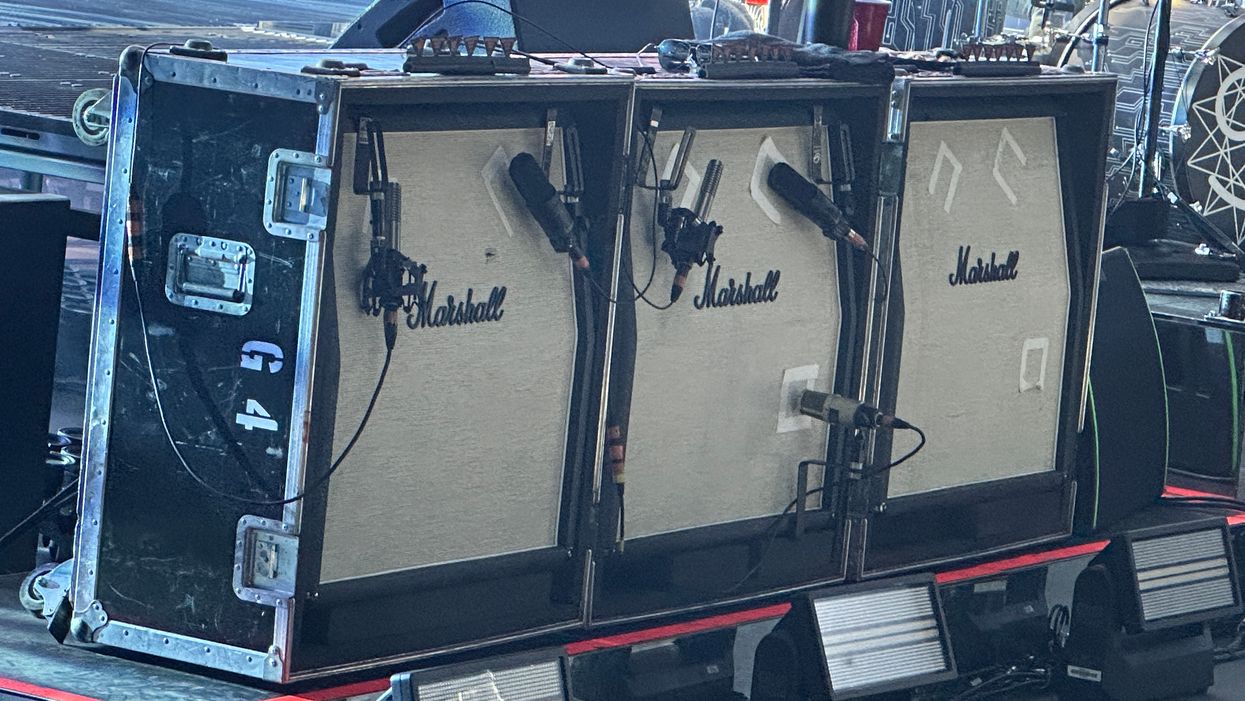
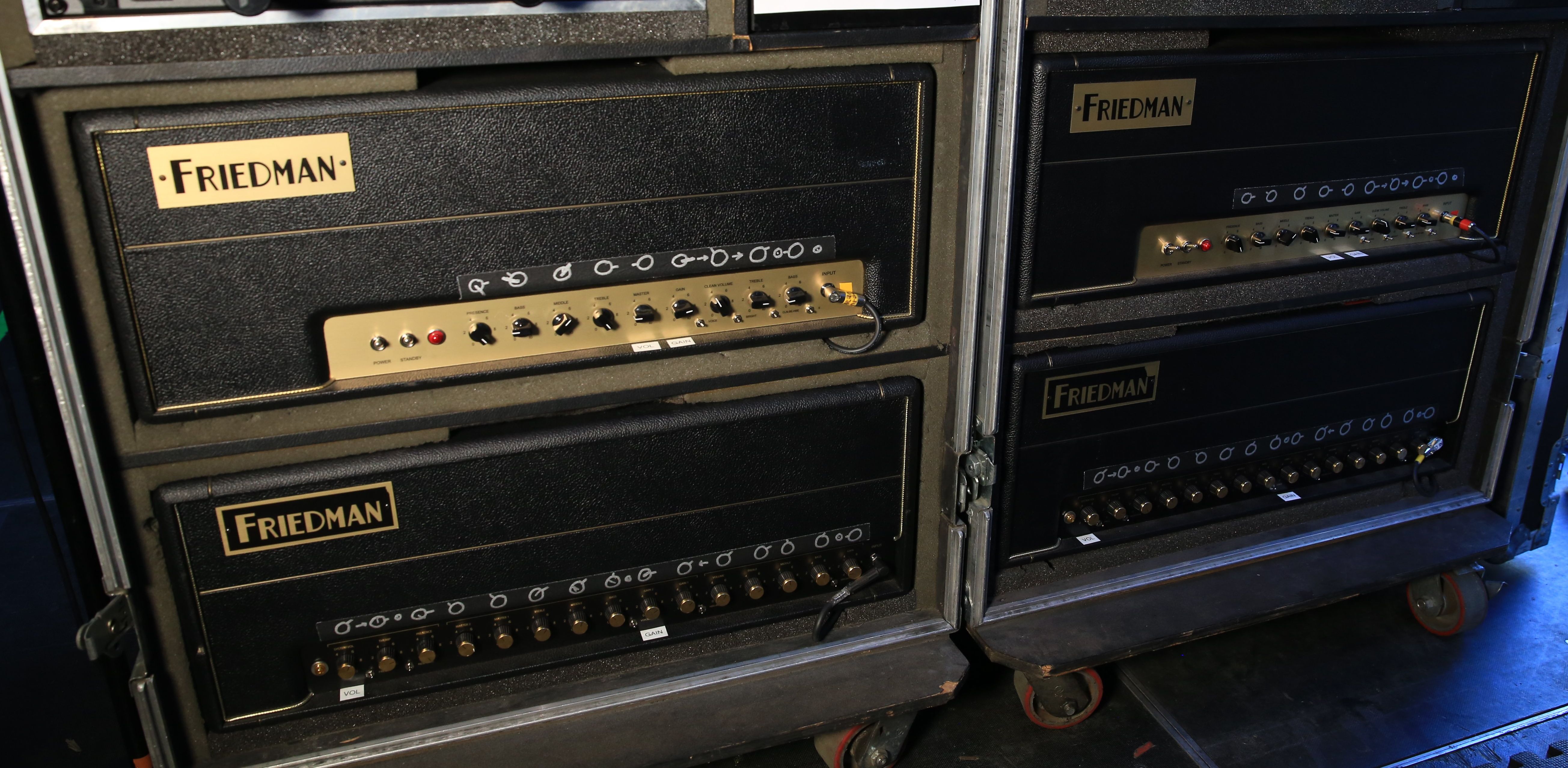
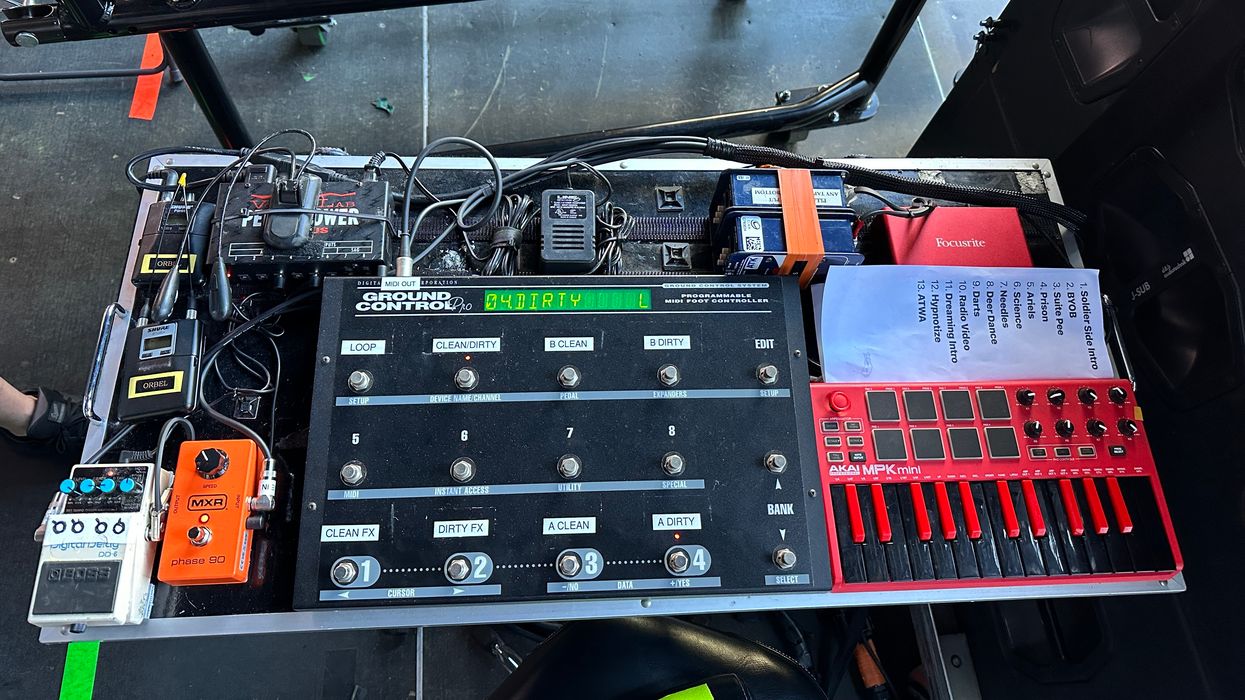

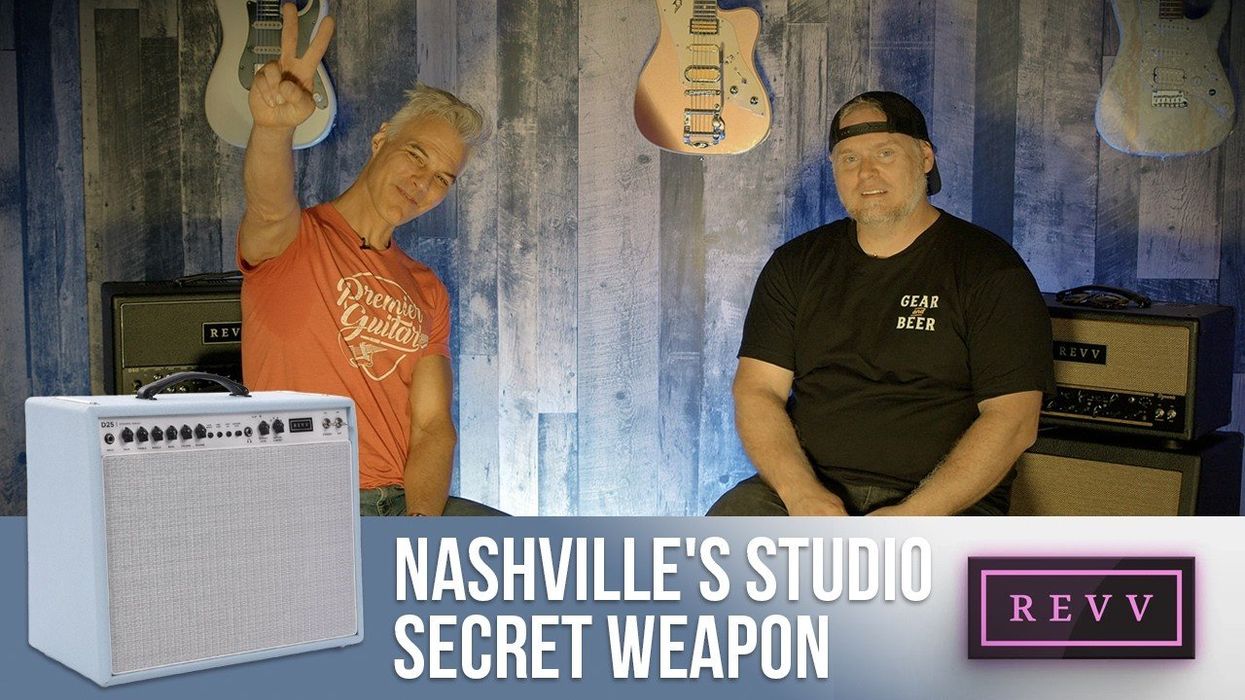
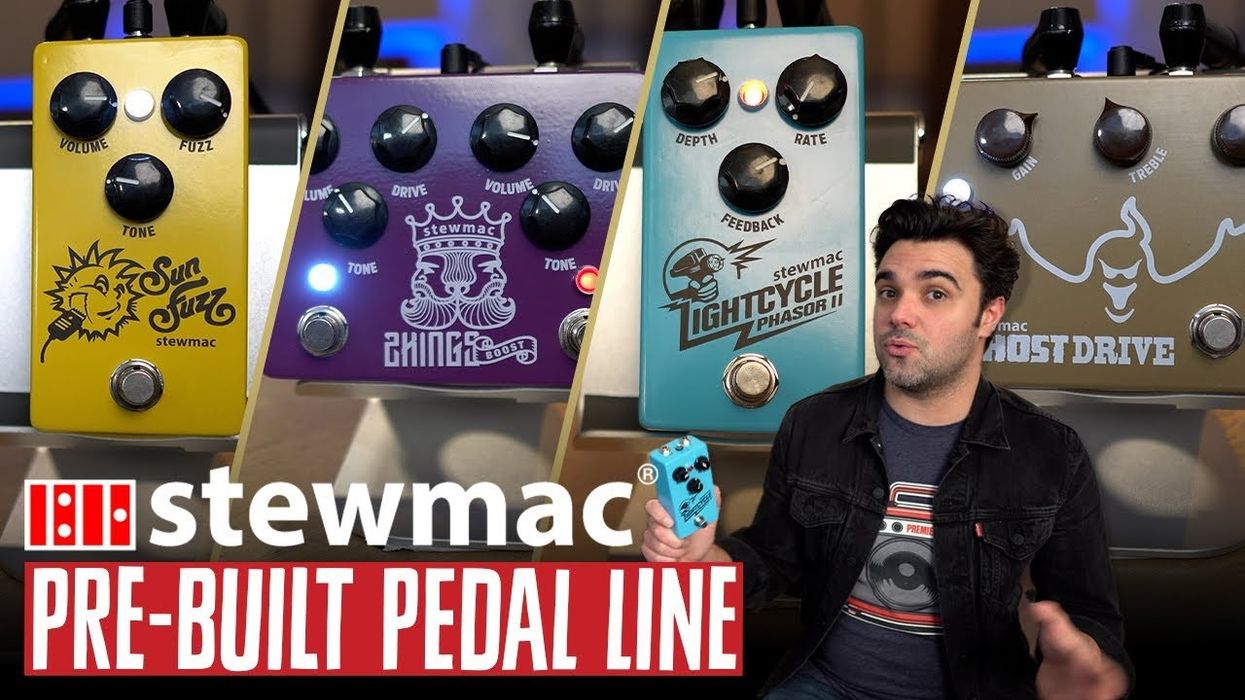
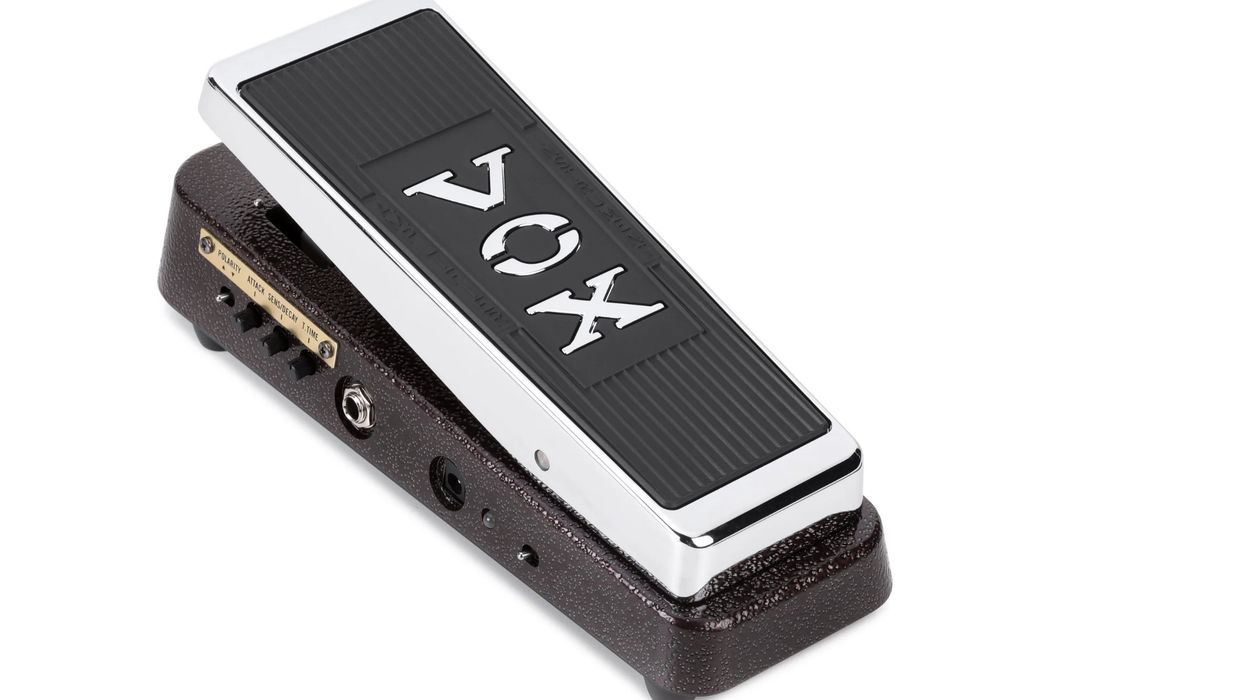
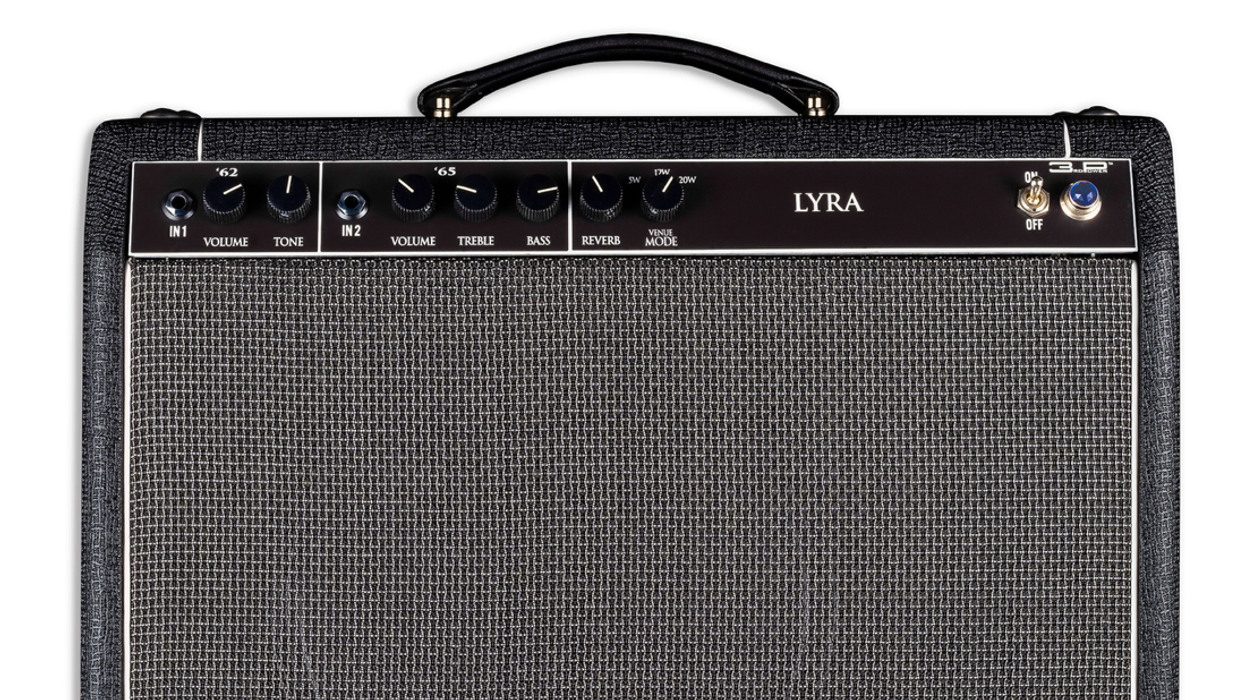
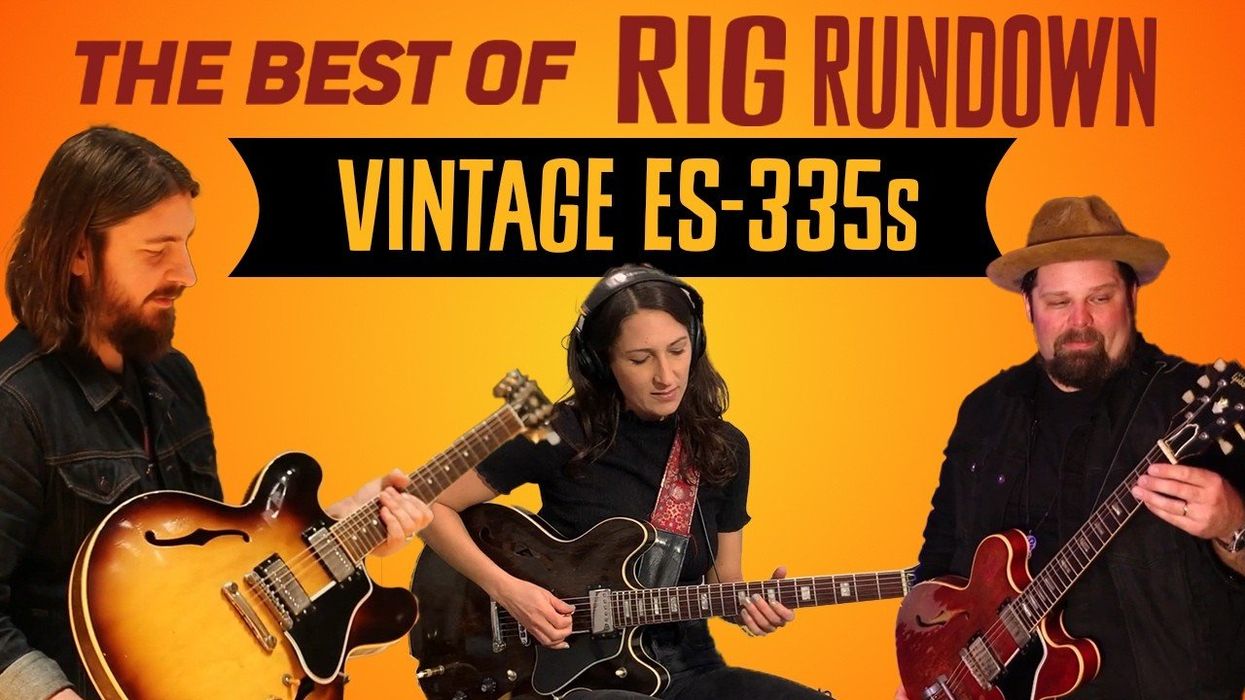
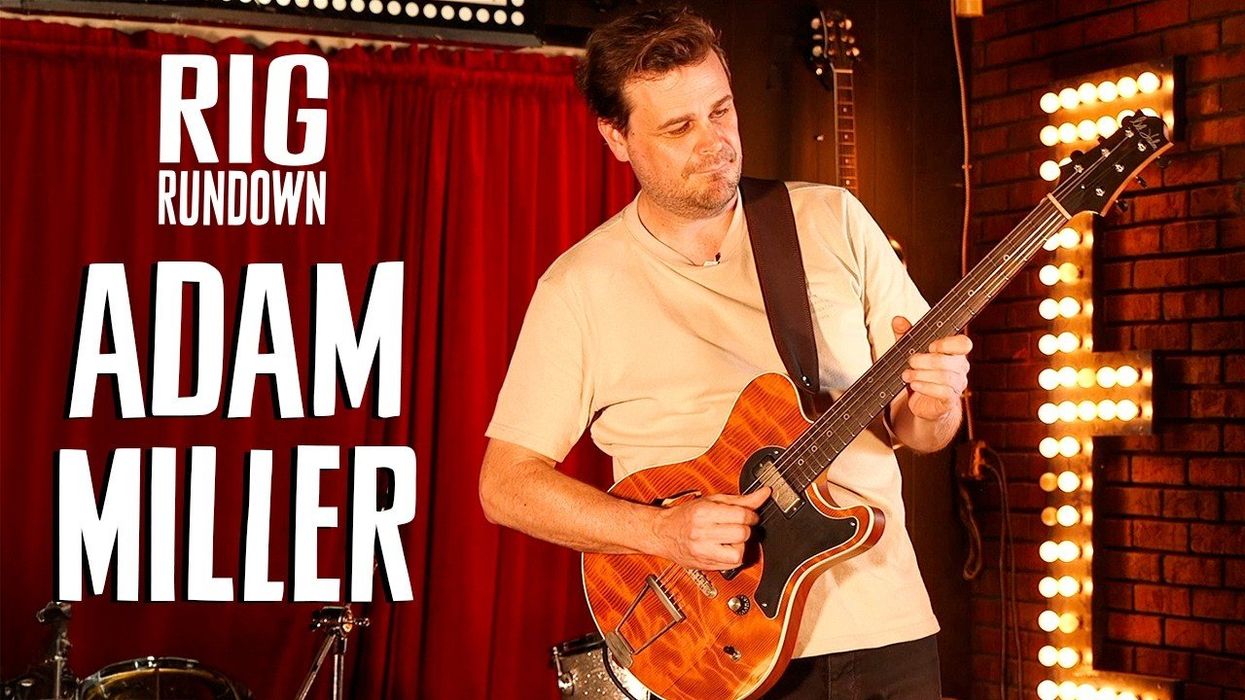
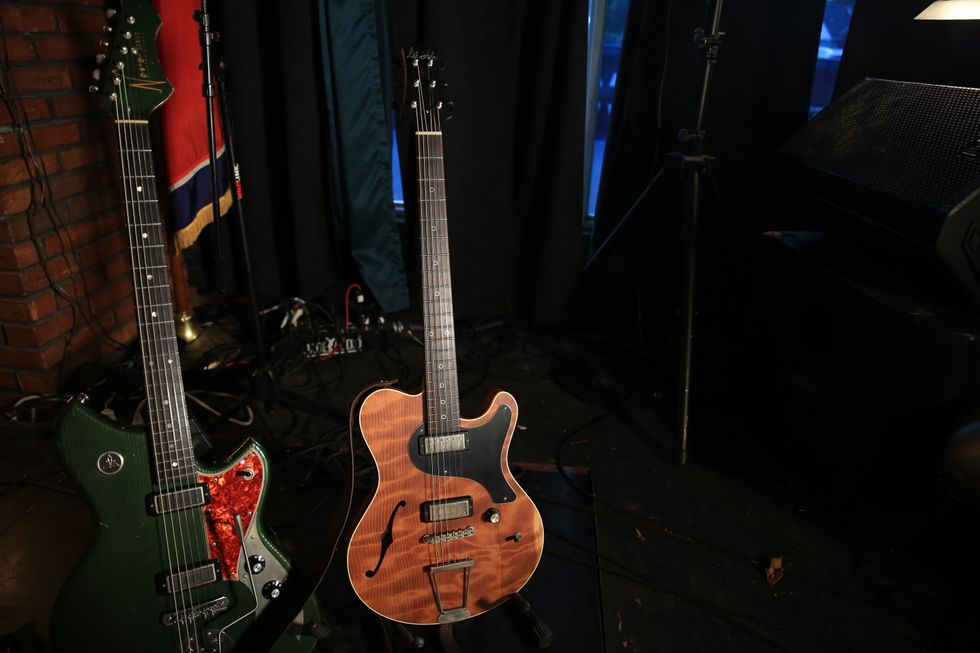
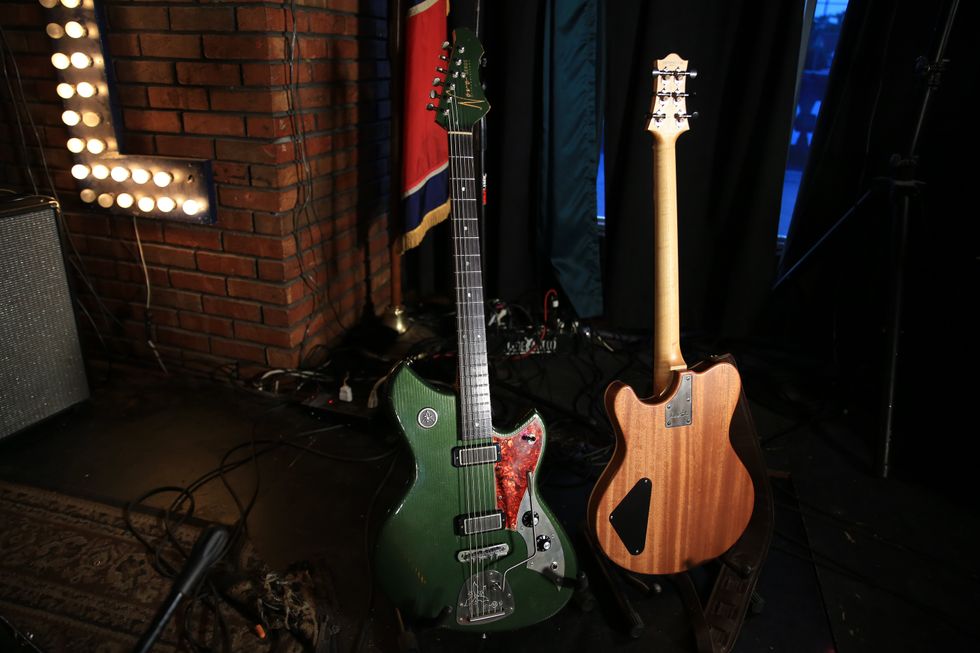
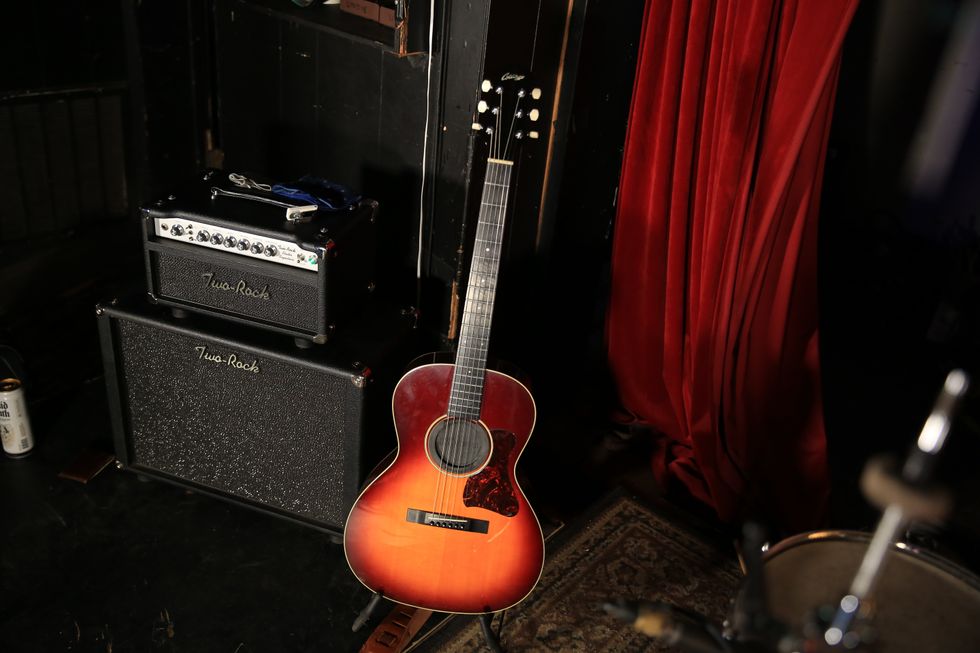
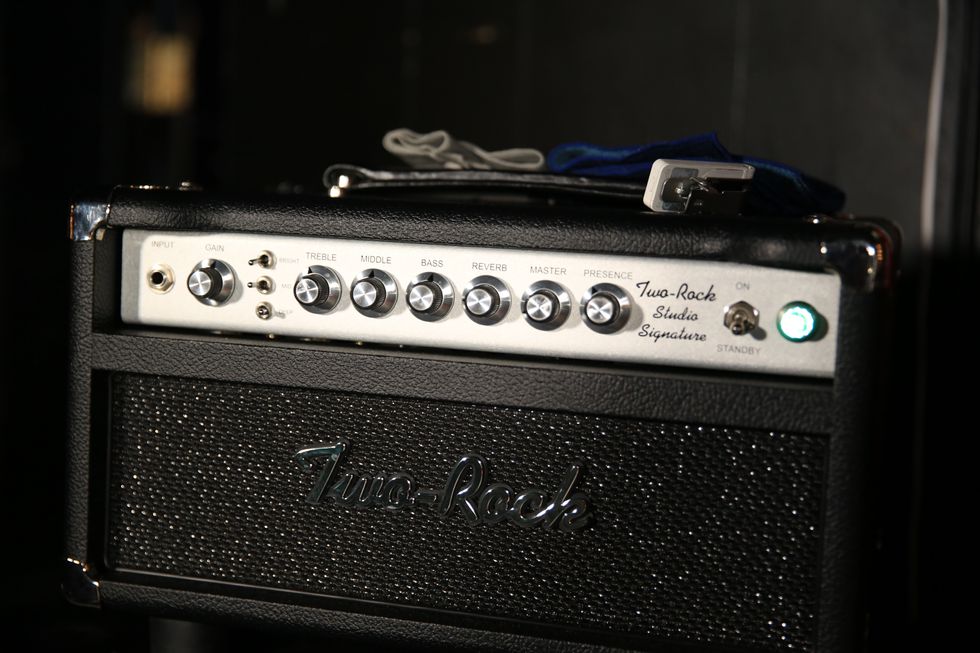
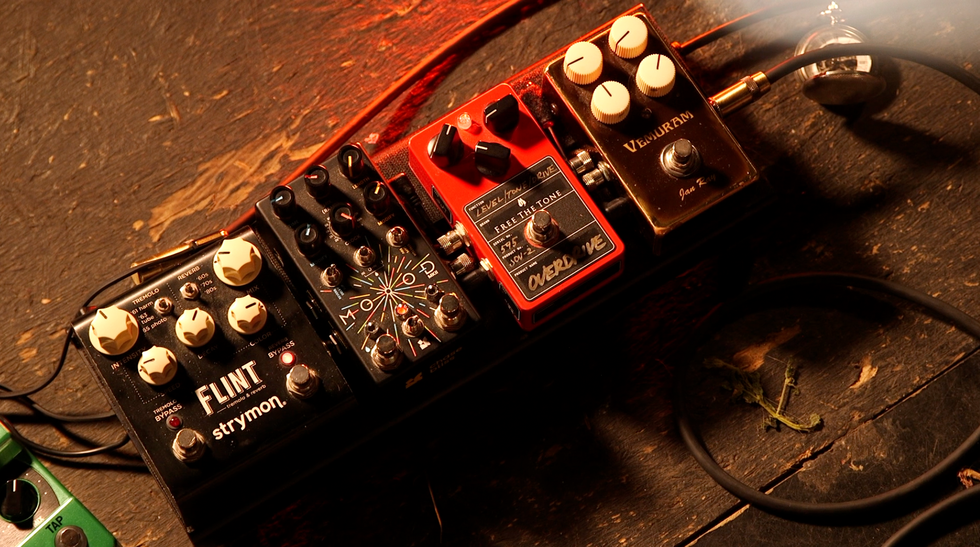
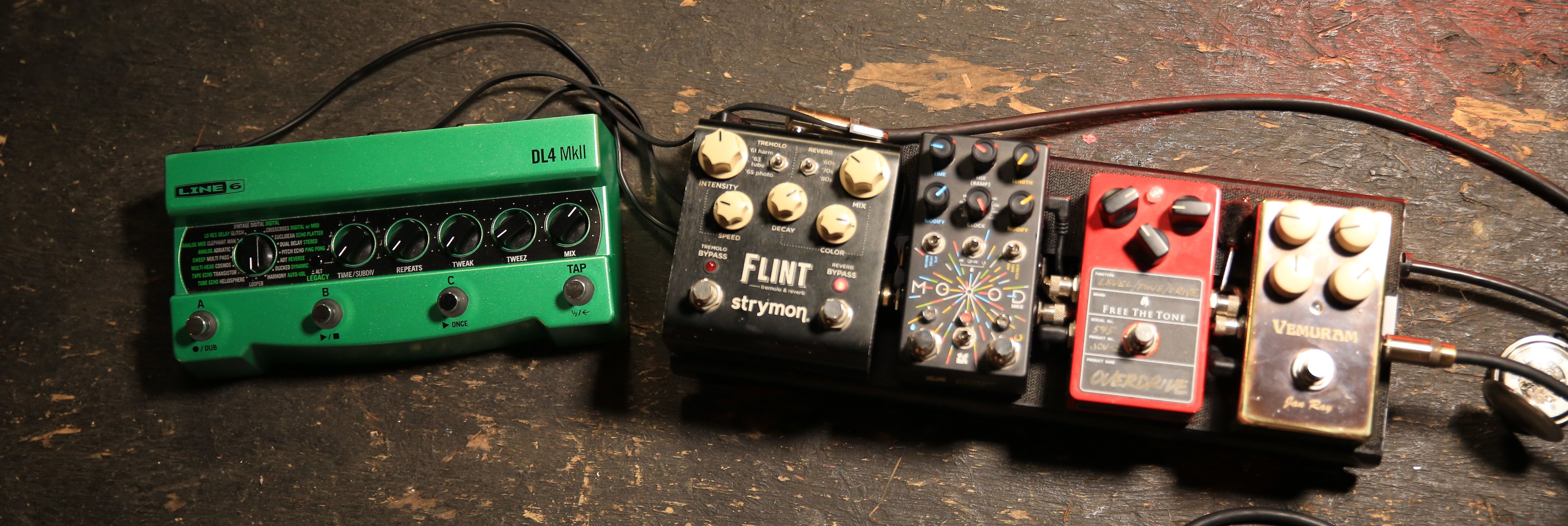 Miller’s Collings runs into a Grace Design ALiX preamp, which helps him fine-tune his EQ and level out pickups with varying output when he switches instruments. For reverb, sometimes he’ll tap the
Miller’s Collings runs into a Grace Design ALiX preamp, which helps him fine-tune his EQ and level out pickups with varying output when he switches instruments. For reverb, sometimes he’ll tap the 
